-
2025-07-19
-
05:00
女子美洲国家杯
完场乌拉圭女足
 1-0
1-0
 秘鲁女足
秘鲁女足
-
05:00
美乙2
完场犹他联
 0-2
0-2
 斯诺霍米什联队
斯诺霍米什联队
-
05:00
美乙2
加时阿尔马登
 0-1
0-1
 图森
图森
-
05:00
尼加拉瓜甲级联赛
完场沃尔特费雷迪
 3-0
3-0
 UNAN马纳瓜
UNAN马纳瓜
-
05:00
尼加拉瓜甲级联赛
完场皇家埃斯特利
 2-1
2-1
 皇家马德里斯
皇家马德里斯
-
05:00
巴马全联
完场CD尤尼维尔斯塔里奥后备队
 4-0
4-0
 拉法米利亚FC
拉法米利亚FC
-
05:30
巴拉圭甲级联赛
完场卡巴列罗将军
 0-1
0-1
 五月二日体育会
五月二日体育会
-
05:30
巴拉圭乙级联赛
完场费纳多
 3-2
3-2
 卡拉普瓜
卡拉普瓜
-
05:30
委内瑞拉超级联赛
完场拉瓜伊拉
 4-0
4-0
 祖利亚诺
祖利亚诺
-
05:30
哥斯U19
完场阿拉胡埃伦斯U19
 0-0
0-0
 肯塔吉内斯U19
肯塔吉内斯U19
-
05:45
墨西哥女子超级联赛
下半场克雷塔罗女足
 0-1
0-1
 瓜达拉哈拉女足
瓜达拉哈拉女足
-
06:00
巴西乙级联赛
下半场戈亚尼亚竞技
 0-1
0-1
 克里丘马
克里丘马
-
06:00
巴西圣保罗州青年联赛
下半场维络青年队
 0-2
0-2
 诺瓦里桑蒂诺青年队
诺瓦里桑蒂诺青年队
-
06:30
阿根廷丙级曼特波里顿联赛
半场伊图萨因戈
 1-0
1-0
 波多黎各努埃沃
波多黎各努埃沃
-
06:30
阿根廷甲级联赛
下半场博卡青年
 0-0
0-0
 圣塔菲联
圣塔菲联
-
07:00
加拿大职业超级联赛
上半场弗尔戈FC
 0-0
0-0
 太平洋FC
太平洋FC
-
07:00
巴圣杯
上半场皮拉西卡巴
 0-0
0-0
 圣本图
圣本图
-
07:00
美国足球冠军联赛
上半场底特律城
 0-0
0-0
 匹兹堡猎犬河队
匹兹堡猎犬河队
-
07:00
智利甲级联赛
上半场埃弗顿VM
 0-0
0-0
 利马切颜色
利马切颜色
-
07:00
智利丙级联赛
上半场奥瓦莱队
 0-0
0-0
 体育联合会
体育联合会
-
07:00
哥伦比亚甲级联赛
上半场马达莱纳联
 0-0
0-0
 拉尼洛斯
拉尼洛斯
-
07:00
美乙2
上半场佛蒙特绿队
 0-0
0-0
 哈德逊谷铁锤
哈德逊谷铁锤
-
07:00
巴马全联
上半场科斯塔埃斯特角后备队
 0-0
0-0
 陶罗后备队
陶罗后备队
-
07:05
美国足球甲级联赛
上半场奥马哈
 1-2
1-2
 托曼塔FC
托曼塔FC
-
07:10
加拿大职业超级联赛
上半场渥太华竞技
 1-0
1-0
 HFX流浪者
HFX流浪者
-
07:25
多米尼加共和国甲级联赛
上半场DS FC
 0-0
0-0
 哈莱姆联合
哈莱姆联合
-
07:30
美国足球冠军联赛
未开赛北卡罗莱纳
 0-0
0-0
 印地十一
印地十一
-
07:30
美乙2
未开赛弗林特城
 0-0
0-0
 钢都
钢都
-
07:30
美乙2
未开赛萨拉索塔天堂
 0-0
0-0
 运动Jax
运动Jax
-
07:30
美乙2
未开赛莱茵布里奇足球俱乐部
 0-0
0-0
 塞勒姆城
塞勒姆城
-
08:00
厄瓜多尔甲级联赛
未开赛山谷独立
 0-0
0-0
 奥卡斯
奥卡斯
-
08:00
女子美洲国家杯
未开赛阿根廷女足
 0-0
0-0
 智利女足
智利女足
-
08:00
秘鲁甲级联赛
未开赛加西拉索
 0-0
0-0
 洛斯香卡斯
洛斯香卡斯
-
08:00
美预备联
未开赛亨斯维尔城
 0-0
0-0
 哥伦布机员B队
哥伦布机员B队
-
08:00
美乙2
未开赛德莫因斯
 0-0
0-0
 梦想FC
梦想FC
-
08:00
智利丁级联赛
未开赛上普恩特
 0-0
0-0
 都市吉视
都市吉视
-
08:00
委内瑞拉超级联赛
未开赛安佐阿特吉
 0-0
0-0
 加拉加斯
加拉加斯
-
08:00
哥斯U21
未开赛阿拉胡埃伦斯U21
 0-0
0-0
 萨普里萨体育俱乐部U21
萨普里萨体育俱乐部U21
-
08:00
巴拉圭预备队联赛
未开赛卡巴列罗JLM后备队
 0-0
0-0
 五月二日体育会后备队
五月二日体育会后备队
-
08:00
圣基茨和尼维斯超级联赛
未开赛巴斯联合
 0-0
0-0
 卡永火箭
卡永火箭
-
08:30
巴西乙级联赛
未开赛费罗维亚里亚
 0-0
0-0
 巴西竞技
巴西竞技
-
08:30
阿根廷甲级联赛
未开赛图库曼竞技
 0-0
0-0
 科尔多瓦中央
科尔多瓦中央
-
08:30
美预备联
未开赛堪萨斯城后备队
 0-0
0-0
 北得克萨斯
北得克萨斯
-
08:30
美乙2
未开赛多坦联队
 0-0
0-0
 小石城流浪
小石城流浪
-
08:30
阿根地区
未开赛帕兹民族JM
 0-0
0-0
 伊塔蒂
伊塔蒂
-
08:30
中国青少年足球联赛(男子U15组)
未开赛上海海港U15
 0-0
0-0
 长郡滨江U15
长郡滨江U15
-
08:30
中国青少年足球联赛(男子U15组)
未开赛南京栗之星U15
 0-0
0-0
 幸运星康城U15
幸运星康城U15
-
08:30
中国青少年足球联赛(男子U15组)
未开赛武汉三镇U15
 0-0
0-0
 亳州体校十一中U15
亳州体校十一中U15
-
08:30
中国青少年足球联赛(男子U15组)
未开赛上海申花U15
 0-0
0-0
 合肥体校U15
合肥体校U15
-
09:00
墨西哥超级联赛
未开赛内卡萨
 0-0
0-0
 克雷塔罗
克雷塔罗
-
09:00
墨西哥女子超级联赛
未开赛老虎大学女足
 0-0
0-0
 内卡萨女足
内卡萨女足
-
09:00
洪都拉斯甲级联赛
未开赛霍洛玛体育会
 0-0
0-0
 胡蒂卡尔帕
胡蒂卡尔帕
-
09:10
哥伦比亚甲级联赛
未开赛托利马体育
 0-0
0-0
 圣塔菲
圣塔菲
-
09:15
澳維甲U23
未开赛东方狮子U23
 0-0
0-0
 西部联U23
西部联U23
-
09:30
巴马甲足球联赛
未开赛维拉加斯FC
 0-0
0-0
 埃雷拉足球俱乐部
埃雷拉足球俱乐部
-
09:30
斐济全国联赛
未开赛拉巴萨
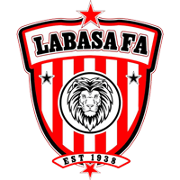 0-0
0-0
 劳托卡
劳托卡
-
09:30
中国青少年足球联赛(男子U15组)
未开赛大连英博U14
 0-0
0-0
 延吉体校U15
延吉体校U15
-
09:30
中国青少年足球联赛(男子U15组)
未开赛沈阳大球中心U15
 0-0
0-0
 大连英博U15
大连英博U15
-
10:00
澳维U23
未开赛艾云达尔U23
 0-0
0-0
 丹德农市U23
丹德农市U23
-
10:00
秘鲁甲级联赛
未开赛秘鲁体育大学
 0-0
0-0
 卡哈马卡商业联
卡哈马卡商业联
-
10:00
新西兰南部联赛
未开赛瓦纳卡AFC
 0-0
0-0
 海岸精神
海岸精神
-
10:00
澳威北后备
未开赛兰布顿加法斯后备队
 0-0
0-0
 瓦伦蒂勒后备队
瓦伦蒂勒后备队
-
10:00
美乙2
未开赛文图拉县
 0-0
0-0
 圣胡安SC
圣胡安SC
-
10:00
尼加拉瓜甲级联赛
未开赛迪里亚
 0-0
0-0
 兰乔桑塔纳FC
兰乔桑塔纳FC
-
10:00
澳威北后备
未开赛查尔斯顿市布鲁斯后备队
 0-0
0-0
 库克山后备队
库克山后备队
-
10:00
中国青少年足球联赛(男子U15组)
未开赛曲靖民中U15
 0-0
0-0
 贵师附中宏兴U15
贵师附中宏兴U15
-
10:00
中国青少年足球联赛(男子U15组)
未开赛成都棠外U15
 0-0
0-0
 重庆杨中U15
重庆杨中U15
-
10:00
中国青少年足球联赛(男子U15组)
未开赛川大附中U15
 0-0
0-0
 重庆七中东川U15
重庆七中东川U15
-
10:15
澳大利亚塔斯马尼亚锦标赛
未开赛朗赛斯顿城后备队
 0-0
0-0
 瑞维尔塞德奥林匹克B队
瑞维尔塞德奥林匹克B队
-
10:15
澳大利亚塔斯马尼亚U21联赛
未开赛克拉伦斯斑马U21
 0-0
0-0
 金布洛治狮队U21
金布洛治狮队U21
-
10:30
新西兰中央联赛
未开赛米拉马尔流浪者
 0-0
0-0
 上哈特市
上哈特市
-
10:30
新西兰中央联赛
未开赛卡洛里
 0-0
0-0
 威斯顿沙伯
威斯顿沙伯
-
10:30
美乙2
未开赛巴拉德
 0-0
0-0
 科罗拉多风暴
科罗拉多风暴
-
10:30
澳大利亚首都特区U23联赛
未开赛康纳骑士U23
 0-0
0-0
 约加利SCU23
约加利SCU23
-
10:30
澳大利亚首都特区U23联赛
未开赛古玛老虎U23
 0-0
0-0
 昆比亚城市U23
昆比亚城市U23
-
10:45
新西兰南部联赛
未开赛菲利米德海湾
 0-0
0-0
 坎特伯雷大学
坎特伯雷大学
-
10:45
新西兰南部联赛
未开赛诺美德斯
 0-0
0-0
 羊绒工业
羊绒工业
-
10:45
澳大利亚南后备
未开赛阿德莱德彗星后备队
 0-0
0-0
 阿德莱德SC后备队
阿德莱德SC后备队
-
11:00
墨西哥超级联赛
未开赛圣路易斯竞技
 0-0
0-0
 蒙特雷
蒙特雷
-
11:00
墨西哥超级联赛
未开赛马萨特兰
 0-0
0-0
 普埃布拉
普埃布拉
-
11:00
墨西哥女子超级联赛
未开赛华雷斯女足
 0-0
0-0
 普埃布拉女足
普埃布拉女足
-
11:00
新西兰北部联赛
未开赛奥克兰联
 0-0
0-0
 陶朗加市联
陶朗加市联
-
11:00
新西兰北部联赛
未开赛奥克兰FC后备队
 0-0
0-0
 马努雷瓦
马努雷瓦
-
11:00
新西兰北部联赛
未开赛奥克兰东郊
 0-0
0-0
 东海岸的海湾
东海岸的海湾
-
11:00
美预备联
未开赛波特兰伐木工后备队
 0-0
0-0
 明尼苏达联B队
明尼苏达联B队
-
11:00
新西兰北部联赛
未开赛奥林匹克湾
 0-0
0-0
 奥克兰城
奥克兰城
-
11:00
新西兰北部联赛
未开赛伯肯黑德联
 0-0
0-0
 西斯普林斯
西斯普林斯
-
11:00
斐济全国联赛
未开赛芭
 0-0
0-0
 纳西努FC
纳西努FC
-
11:00
澳大利亚西部U23联赛
未开赛施蒂林马塞多尼亚U23
 0-0
0-0
 FC索伦托U23
FC索伦托U23
-
11:00
澳亚U23
未开赛兰沃里林弗洛U23
 0-0
0-0
 墨尔本城U23
墨尔本城U23
-
11:15
澳大利亚南后备
未开赛富勒姆联后备队
 0-0
0-0
 阿德莱德蓝鹰后备队
阿德莱德蓝鹰后备队
-
11:15
澳大利亚南后备
未开赛帕拉山骑士后备队
 0-0
0-0
 坎贝尔市体育馆后备队
坎贝尔市体育馆后备队
-
11:15
澳大利亚南后备
未开赛莫德柏里喷射机后备队
 0-0
0-0
 白城FK贝尔格莱后备队
白城FK贝尔格莱后备队
-
11:15
澳大利亚南后备
未开赛南阿德莱德后备队
 0-0
0-0
 塞利斯贝瑞联后备队
塞利斯贝瑞联后备队
-
11:15
澳大利亚南后备
未开赛庞蒂安鹰后备队
 0-0
0-0
 阿德莱德毒蛇后备队
阿德莱德毒蛇后备队
-
11:15
澳大利亚南后备
未开赛科夫后备队
 0-0
0-0
 西阿德莱后备队
西阿德莱后备队
-
11:15
澳大利亚南后备
未开赛普雷福特后备队
 0-0
0-0
 地铁之星后备队
地铁之星后备队
-
11:30
女大洋杯
未开赛斐济女足
 0-0
0-0
 萨摩亚女足
萨摩亚女足
-
12:00
澳维U23
未开赛格林古利U23
 0-0
0-0
 海德堡联U23
海德堡联U23
-
12:00
澳大利亚新南威尔士州北部联
未开赛查尔斯顿市布鲁斯
 0-0
0-0
 库山
库山
-
12:00
澳大利亚新南威尔士州北部联
未开赛林顿加法斯
 0-0
0-0
 瓦伦蒂勒
瓦伦蒂勒
-
12:00
澳洲维多利亚女子超级联赛
未开赛南墨尔本女足
 0-0
0-0
 波克海尔女足
波克海尔女足
-
12:00
澳大利亚塔斯马尼亚超级联赛
未开赛南霍巴特
 0-0
0-0
 德文波特城
德文波特城
-
12:15
澳大利亚塔斯马尼亚锦标赛
未开赛北部流浪
 0-0
0-0
 朗塞斯顿联后备队
朗塞斯顿联后备队
-
12:30
澳大利亚塔斯马尼亚超级联赛
未开赛霍巴特斑马
 0-0
0-0
 金布洛治狮队
金布洛治狮队
-
12:30
澳洲昆士兰州超级联赛
未开赛布里斯班狮吼青年队
 0-0
0-0
 黄金海岸骑士
黄金海岸骑士
-
12:30
澳大利亚塔斯马尼亚锦标赛
未开赛新城鹰
 0-0
0-0
 霍巴特联
霍巴特联
-
12:30
澳大利亚塔斯马尼亚锦标赛
未开赛东南联合
 0-0
0-0
 克拉伦斯斑马后备队
克拉伦斯斑马后备队
-
12:30
澳大利亚塔斯马尼亚锦标赛
未开赛萨默塞特
 0-0
0-0
 德文波特市后备队
德文波特市后备队
-
12:30
澳大利亚塔斯马尼亚锦标赛
未开赛阿尔弗斯通
 0-0
0-0
 伯尼联
伯尼联
-
12:30
澳威北后备
未开赛贝尔蒙特斯旺西SC后备队
 0-0
0-0
 新兰普顿FC后备队
新兰普顿FC后备队
-
12:45
澳大利亚昆士兰州女子超级联赛
未开赛摩顿城精英女足U23
 0-0
0-0
 西南昆士兰达雷女足
西南昆士兰达雷女足
-
12:45
澳昆U23
未开赛阳光海岸流浪者U23
 0-0
0-0
 黄金海岸联合U23
黄金海岸联合U23
-
13:00
澳洲维多利亚甲级联赛
未开赛伊斯特恩狮队
 0-0
0-0
 西部联青年FC
西部联青年FC
-
13:00
澳大利亚维多利亚州超级联赛
未开赛埃文代尔
 0-0
0-0
 丹德农市
丹德农市
-
13:00
澳洲维多利亚女子超级联赛
未开赛阿拉门女足
 0-0
0-0
 埃森登皇家女足
埃森登皇家女足
-
13:00
澳洲维多利亚女子超级联赛
未开赛新兴体育会女足
 0-0
0-0
 春山俱乐部女足
春山俱乐部女足
-
13:00
澳洲南部超级联赛
未开赛阿德莱德彗星
 0-0
0-0
 阿德莱德SC
阿德莱德SC
-
13:00
澳大利亚首都特区超级联赛
未开赛古玛老虎
 0-0
0-0
 昆比亚城市
昆比亚城市
-
13:00
澳大利亚首都特区超级联赛
未开赛奥康诺骑士
 0-0
0-0
 约加利SC
约加利SC
-
13:00
澳西女超
未开赛西部足球中心女足
 0-0
0-0
 珀斯红星女足
珀斯红星女足
-
13:00
澳大利亚新南威尔士州女子超级联赛
未开赛北部精神女足
 0-0
0-0
 曼立联女足
曼立联女足
-
13:00
澳大利亚新南威尔士州女子超级联赛
未开赛新南威尔士大学女足
 0-0
0-0
 悉尼奥林匹克女足
悉尼奥林匹克女足
-
13:00
球会友谊赛
未开赛惠灵顿凤凰
 0-0
0-0
 雷克瑟姆
雷克瑟姆
-
13:00
澳洲西部后备联赛
未开赛威利普后备
 0-0
0-0
 卡拉曼达城后备队
卡拉曼达城后备队
-
13:00
澳洲西部后备联赛
未开赛因勒乌德联后备队
 0-0
0-0
 黛安拉白鹰后备队
黛安拉白鹰后备队
-
13:00
澳洲西部后备联赛
未开赛乔达路普市后备队
 0-0
0-0
 曼都拉城FC后备队
曼都拉城FC后备队
-
13:00
澳洲西部后备联赛
未开赛尼兰西澳洲大学后备队
 0-0
0-0
 金斯利西部后备队
金斯利西部后备队
-
13:00
澳洲西部后备联赛
未开赛苏比亚科后备
 0-0
0-0
 戈斯奈尔斯后备队
戈斯奈尔斯后备队
-
13:00
澳洲西部后备联赛
未开赛莫道克大学后备队
 0-0
0-0
 科廷大学后备队
科廷大学后备队
-
13:00
澳大利亚南后备
未开赛斯特尔特狮后备队
 0-0
0-0
 坎伯兰联后备队
坎伯兰联后备队
-
13:00
澳大利亚新南威尔士联赛
未开赛中岸水手联
 0-0
0-0
 西部狂怒
西部狂怒
-
13:00
澳大利亚首都特区甲级联赛
未开赛堪培拉祖云达斯
 0-0
0-0
 布伦达贝拉
布伦达贝拉
-
13:00
澳大利亚首都特区甲级联赛
未开赛沃登山谷
 0-0
0-0
 瓦加城流浪
瓦加城流浪
-
13:00
澳大利亚维多利亚超级联赛
未开赛莫尔文市
 0-0
0-0
 马齐诺德胜利
马齐诺德胜利
-
13:00
澳亚U23
未开赛布伦瑞克城U23
 0-0
0-0
 蓝曼宁厄姆联U23
蓝曼宁厄姆联U23
-
13:00
澳大利亚西部U23联赛
未开赛珀斯SC U23
 0-0
0-0
 珀斯红星U23
珀斯红星U23
-
13:00
澳大利亚西部U23联赛
未开赛奥林匹克金威U23
 0-0
0-0
 阿马达尔U23
阿马达尔U23
-
13:00
澳大利亚西部U23联赛
未开赛巴尔卡塔U23
 0-0
0-0
 湾水市U23
湾水市U23
-
13:00
澳大利亚西部U23联赛
未开赛费雷曼特尔市U23
 0-0
0-0
 弗罗瑞特U23
弗罗瑞特U23
-
13:00
澳昆U23
未开赛布罗德比奇联B队U23
 0-0
0-0
 布里斯班前锋U23
布里斯班前锋U23
-
13:00
澳昆U23
未开赛卡帕拉巴U23
 0-0
0-0
 南国老鹰U23
南国老鹰U23
-
13:15
澳大利亚昆士兰州女子超级联赛
未开赛布里斯班城女足
 0-0
0-0
 昆士兰狮女足
昆士兰狮女足
-
13:15
澳亚U23
未开赛墨尔本塞尔维U23
 0-0
0-0
 北阳光埃勒斯U23
北阳光埃勒斯U23
-
13:30
澳洲南部超级联赛
未开赛帕拉山骑士
 0-0
0-0
 坎贝尔市体育馆
坎贝尔市体育馆
-
13:30
澳洲南部超级联赛
未开赛普雷福特
 0-0
0-0
 地铁之星
地铁之星
-
13:30
澳大利亚南部甲级联赛
未开赛南阿德莱德黑豹
 0-0
0-0
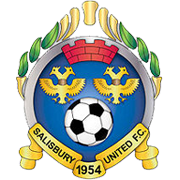 塞利斯贝瑞联
塞利斯贝瑞联
-
13:30
澳大利亚南部甲级联赛
未开赛科夫
 0-0
0-0
 西阿德莱德SC
西阿德莱德SC
-
13:30
澳大利亚南部甲级联赛
未开赛富勒姆联
 0-0
0-0
 阿德莱德蓝鹰
阿德莱德蓝鹰
-
13:30
澳大利亚南部甲级联赛
未开赛庞蒂安老鹰
 0-0
0-0
 阿德莱德毒蛇
阿德莱德毒蛇
-
13:30
澳大利亚南后备
未开赛克罗伊登国王后备队
 0-0
0-0
 阿德莱德城后备队
阿德莱德城后备队
-
13:45
澳亚U23
未开赛乔治十字U23
 0-0
0-0
 莫兰德城U23
莫兰德城U23
-
13:45
澳亚U23
未开赛布琳狮子U23
 0-0
0-0
 诺斯科特市U23
诺斯科特市U23
-
13:50
澳昆U23
未开赛洛根闪电U23
 0-0
0-0
 瑞德兰茨联U23
瑞德兰茨联U23
-
14:00
澳大利亚新南威尔士州北部U20联赛
未开赛卧龙岗狼队U20
 0-0
0-0
 曼立联U20
曼立联U20
-
14:00
澳昆U23
未开赛罗切达尔流浪U23
 0-0
0-0
 魔法联合U23
魔法联合U23
-
14:00
澳昆U23
未开赛温纳姆狼队U23
 0-0
0-0
 半岛电力U23
半岛电力U23
-
14:15
澳洲维多利亚女子超级联赛
未开赛海德堡女足
 0-0
0-0
 布伦瑞克祖云达斯女足
布伦瑞克祖云达斯女足
-
14:30
澳大利亚威尔士甲级联赛
未开赛哈柯亚东悉尼市
 0-0
0-0
 因特莱恩
因特莱恩
-
14:30
澳大利亚塔斯马尼亚超级联赛
未开赛格诺尔基卡纳特斯FC
 0-0
0-0
 兰瑟斯顿联
兰瑟斯顿联
-
14:30
澳大利亚新南威尔士州北部联
未开赛贝尔蒙特斯旺西SC
 0-0
0-0
 新莱姆顿FC
新莱姆顿FC
-
14:30
澳达超
未开赛明迪尔爱瑟斯
 0-0
0-0
 海伦斯
海伦斯
-
14:30
中国青少年足球联赛(男子U15组)
未开赛白银靖远体校U15
 0-0
0-0
 西安铁一中俱乐部U15
西安铁一中俱乐部U15
-
14:30
中国青少年足球联赛(男子U15组)
未开赛榆林未来U15
 0-0
0-0
 鄂尔多斯市体育职业中学U15
鄂尔多斯市体育职业中学U15
-
14:30
中国青少年足球联赛(男子U15组)
未开赛陕师大附中U15
 0-0
0-0
 石嘴山实验恒星U15
石嘴山实验恒星U15
-
14:45
澳大利亚塔斯马尼亚超级联赛
未开赛朗赛斯顿城
 0-0
0-0
 河畔奥林匹克
河畔奥林匹克
-
14:45
澳昆乙
未开赛米切尔顿
 0-0
0-0
 南部联合
南部联合
-
15:00
澳大利亚布里斯班甲级联赛
未开赛卡利拿
 0-0
0-0
 耶龙加
耶龙加
-
15:00
澳洲昆士兰州超级联赛
未开赛阳光海岸流浪者
 0-0
0-0
 黄金海岸联
黄金海岸联
-
15:00
澳大利亚威尔士甲级联赛
未开赛本克斯拓城狮队
 0-0
0-0
 坎特贝利班克斯敦FC
坎特贝利班克斯敦FC
-
15:00
澳大利亚威尔士甲级联赛
未开赛达尔维奇希尔
 0-0
0-0
 麦克亚瑟公羊队
麦克亚瑟公羊队
-
15:00
澳大利亚威尔士甲级联赛
未开赛莱德米尔
 0-0
0-0
 希尤斯布伦贝斯
希尤斯布伦贝斯
-
15:00
澳大利亚西部超级联赛
未开赛巴尔卡塔
 0-0
0-0
 湾水市
湾水市
-
15:00
澳大利亚西部超级联赛
未开赛费雷曼特尔市
 0-0
0-0
 弗罗瑞特
弗罗瑞特
-
15:00
澳大利亚西部超级联赛
未开赛奥林匹克金威
 0-0
0-0
 阿马达尔
阿马达尔
-
15:00
澳大利亚西部超级联赛
未开赛珀斯光荣青年队
 0-0
0-0
 威斯顿骑士
威斯顿骑士
-
15:00
澳大利亚西部超级联赛
未开赛珀斯SC
 0-0
0-0
 珀斯红星
珀斯红星
-
15:00
澳昆乙
未开赛北湖联
 0-0
0-0
 玛卢奇多
玛卢奇多
-
15:00
澳大利亚威尔士甲级联赛
未开赛SD公鹿FC
 0-0
0-0
 北方虎
北方虎
-
15:00
澳大利亚维多利亚州超级联赛
未开赛南墨尔本
 0-0
0-0
 阿尔托纳魔法
阿尔托纳魔法
-
15:00
澳大利亚新南威尔士州北部U20联赛
未开赛圣乔治城U20
 0-0
0-0
 马可尼U20
马可尼U20
-
15:00
新西兰北部联赛
未开赛芬奇布尔斯联
 0-0
0-0
 西海岸游骑兵
西海岸游骑兵
-
15:00
西澳大利亚州甲级联赛
未开赛格韦卢普
 0-0
0-0
 卡拉曼达城
卡拉曼达城
-
15:00
西澳大利亚州甲级联赛
未开赛因勒乌德联
 0-0
0-0
 黛安拉白鹰
黛安拉白鹰
-
15:00
西澳大利亚州甲级联赛
未开赛乔达路普市
 0-0
0-0
 曼都拉
曼都拉
-
15:00
西澳大利亚州甲级联赛
未开赛莫道克大学
 0-0
0-0
 科廷大学
科廷大学
-
15:00
西澳大利亚州甲级联赛
未开赛尼兰西澳洲大学
 0-0
0-0
 金斯利西部
金斯利西部
-
15:00
西澳大利亚州甲级联赛
未开赛苏比亚科
 0-0
0-0
 高斯诺尔市
高斯诺尔市
-
15:00
澳门甲级联赛
未开赛嘉华
 0-0
0-0
 澳门士砵亭
澳门士砵亭
-
15:00
澳大利亚维多利亚州级联赛
未开赛北部吉隆勇士
 0-0
0-0
 华勒比市
华勒比市
-
15:00
澳大利亚新南威尔士联赛
未开赛霍克斯布里城
 0-0
0-0
 卡姆登
卡姆登
-
15:00
澳大利亚新南威尔士联赛
未开赛帕拉玛塔鹰
 0-0
0-0
 格兰德斯威尔
格兰德斯威尔
-
15:00
澳北女超
未开赛麦觉理湖女足
 0-0
0-0
 新莱姆顿FC女足
新莱姆顿FC女足
-
15:00
女大洋杯
未开赛巴布亚新几内亚女足
 0-0
0-0
 所罗门女足
所罗门女足
-
15:00
澳大利亚昆士兰州女子超级联赛
未开赛卡帕拉巴女足
 0-0
0-0
 弗吉尼亚联女足
弗吉尼亚联女足
-
15:00
澳大利亚新南威尔士州北部U20联赛
未开赛南区突袭者U20
 0-0
0-0
 北方虎U20
北方虎U20
-
15:00
球会友谊赛
未开赛赫巴
 0-0
0-0
 马里萨
马里萨
-
15:00
中国青少年足球联赛(男子U15组)
未开赛昆明福之博U15
 0-0
0-0
 绵阳南山双语U15
绵阳南山双语U15
-
15:00
中国青少年足球联赛(男子U15组)
未开赛云南玉昆U15
 0-0
0-0
 重庆凤中U15
重庆凤中U15
-
15:00
中国青少年足球联赛(男子U15组)
未开赛重庆南开U15
 0-0
0-0
 德阳奥校U15
德阳奥校U15
-
15:00
中国青少年足球联赛(男子U15组)
未开赛河南俱乐部U15
 0-0
0-0
 郑州汉森U15
郑州汉森U15
-
15:00
中国青少年足球联赛(男子U15组)
未开赛天津王者U15
 0-0
0-0
 天津鹏程U15
天津鹏程U15
-
15:00
中国青少年足球联赛(男子U15组)
未开赛海淀体校三高U15
 0-0
0-0
 青岛海牛海诺U13
青岛海牛海诺U13
-
15:00
球会友谊赛
未开赛库克伦竞技
 0-0
0-0
 利夫斯基卡尔洛沃
利夫斯基卡尔洛沃
-
15:15
澳洲昆士兰州甲级联赛
未开赛布罗德海滩联合
 0-0
0-0
 布里斯班前锋
布里斯班前锋
-
15:15
澳大利亚南部地区女子超级联赛
未开赛阿德莱科梅兹女足
 0-0
0-0
 坎贝尔市体育馆女足
坎贝尔市体育馆女足
-
15:15
澳大利亚南后备
未开赛阿德莱德眼镜蛇后备队
 0-0
0-0
 阿德莱德奥林匹克后备队
阿德莱德奥林匹克后备队
-
15:15
澳大利亚新南威尔士联赛
未开赛南海岸火焰
 0-0
0-0
 赫斯特维尔
赫斯特维尔
-
15:30
澳大利亚南部甲级联赛
未开赛斯特尔特狮队
 0-0
0-0
 坎伯兰联
坎伯兰联
-
15:30
澳大利亚威尔士甲级联赛
未开赛新南威尔士大学
 0-0
0-0
 黑镇斯巴达
黑镇斯巴达
-
15:30
澳大利亚新南威尔士州超级联赛
未开赛北部精神
 0-0
0-0
 洛克达尔
洛克达尔
-
15:30
澳洲昆士兰州超级联赛
未开赛布里斯班城
 0-0
0-0
 昆士兰狮队
昆士兰狮队
-
15:30
澳大利亚新南威尔士州北部U20联赛
未开赛黑镇市足球俱乐部U20
 0-0
0-0
 萨瑟兰德U20
萨瑟兰德U20
-
15:30
球会友谊赛
未开赛梅索科菲德
 0-0
0-0
 魔王SC
魔王SC
-
15:30
球会友谊赛
未开赛鲁达士
 0-0
0-0
 德拉格沃尔雅克
德拉格沃尔雅克
-
16:00
澳大利亚布里斯班甲级联赛
未开赛北布里斯班
 0-0
0-0
 伊普斯维奇骑士
伊普斯维奇骑士
-
16:00
澳洲维多利亚甲级联赛
未开赛卡罗琳
 0-0
0-0
 莫兰德城
莫兰德城
-
16:00
澳洲昆士兰州甲级联赛
未开赛洛根闪电
 0-0
0-0
 瑞德兰茨联
瑞德兰茨联
-
16:00
中国足球乙级联赛
未开赛无锡吴钩
 0-0
0-0
 长春喜都
长春喜都
-
16:00
日本足球联赛
未开赛横滨体育
 0-0
0-0
 丸安冈崎
丸安冈崎
-
16:00
澳大利亚新南威尔士州超级联赛
未开赛卧龙海岸狼队
 0-0
0-0
 曼立联
曼立联
-
16:00
韩国足球丙级联赛
未开赛釜山运输
 0-0
0-0
 庆州水利
庆州水利
-
16:00
韩国足球丙级联赛
未开赛全北现代B队
 0-0
0-0
 坡州市民
坡州市民
-
16:00
澳洲维多利亚甲级联赛
未开赛金士顿城
 0-0
0-0
 本特利绿茵
本特利绿茵
-
16:00
澳洲维多利亚甲级联赛
未开赛布琳狮子
 0-0
0-0
 诺夫克特
诺夫克特
-
16:00
澳大利亚南部地区女子超级联赛
未开赛托列斯比卡拉女足
 0-0
0-0
 索尔兹伯里女足
索尔兹伯里女足
-
16:00
澳大利亚维多利亚州级联赛
未开赛吉朗
 0-0
0-0
 高宝谷太阳
高宝谷太阳
-
16:00
球会友谊赛
未开赛布达尔斯
 0-0
0-0
 格德勒
格德勒
-
16:00
球会友谊赛
未开赛阿贾克
 0-0
0-0
 卡斯瓦利
卡斯瓦利
-
16:00
球会友谊赛
未开赛佩鲁茨
 0-0
0-0
 科伦SC
科伦SC
-
16:00
球会友谊赛
未开赛巴拉頓勒勒
 0-0
0-0
 维斯普雷姆
维斯普雷姆
-
16:00
球会友谊赛
未开赛拿高斯柏路泰
 0-0
0-0
 彭祖约
彭祖约
-
16:00
球会友谊赛
未开赛霍德梅泽瓦沙海伊
 0-0
0-0
 蒂招西盖特SE
蒂招西盖特SE
-
16:00
球会友谊赛
未开赛恩尔格提克
 0-0
0-0
 皮里奥威克
皮里奥威克
-
16:00
球会友谊赛
未开赛新佩斯B队
 0-0
0-0
 切贝尔
切贝尔
-
16:00
澳大利亚维多利亚超级联赛
未开赛韦斯特
 0-0
0-0
 西郊SC
西郊SC
-
16:00
球会友谊赛
未开赛舍佩斯
 0-0
0-0
 图纳里
图纳里
-
16:00
球会友谊赛
未开赛胡尼克拉科夫
 0-0
0-0
 赫鲁钦
赫鲁钦
-
16:00
球会友谊赛
未开赛米亚瓦斯巴达女足
 0-0
0-0
 布达佩斯捍卫者女足
布达佩斯捍卫者女足
-
16:00
球会友谊赛
未开赛费哈瓦
 0-0
0-0
 米诺利
米诺利
-
16:00
球会友谊赛
未开赛阿富马齐
 0-0
0-0
 拉米库瓦尔塞
拉米库瓦尔塞
-
16:00
球会友谊赛
未开赛波夫塔瓦FA
0-0
 利贝雷茨B队
利贝雷茨B队
-
16:00
中国青少年足球联赛(男子U15组)
未开赛大连三十九中U15
 0-0
0-0
 黑龙江U15
黑龙江U15
-
16:00
中国青少年足球联赛(男子U15组)
未开赛长春亚泰U15
 0-0
0-0
 沈阳鑫野足球俱乐部U15
沈阳鑫野足球俱乐部U15
-
16:15
澳大利亚布里斯班甲级联赛
未开赛纽玛克特
 0-0
0-0
 红崖
红崖
-
16:15
澳洲昆士兰州甲级联赛
未开赛罗切达尔流浪
 0-0
0-0
 魔法联合TFA
魔法联合TFA
-
16:15
澳昆乙
未开赛北极星
 0-0
0-0
 摩顿城精英后备队
摩顿城精英后备队
-
16:15
澳洲昆士兰州超级联赛
未开赛布里斯班狼队
 0-0
0-0
 半岛电力
半岛电力
-
16:15
球会友谊赛
未开赛切斯卡阿森纳
 0-0
0-0
 艾利特马布拉格
艾利特马布拉格
-
16:15
球会友谊赛
未开赛卡拉路夫
 0-0
0-0
 亚布洛内茨B队
亚布洛内茨B队
-
16:15
球会友谊赛
未开赛内拉托维斯
 0-0
0-0
 杜库拉B队
杜库拉B队
-
16:30
澳洲维多利亚甲级联赛
未开赛墨尔本塞尔维
 0-0
0-0
 北鹰阳光
北鹰阳光
-
16:30
中国足球乙级联赛
未开赛上海海港富盛经开
 0-0
0-0
 山东泰山B队
山东泰山B队
-
16:30
澳大利亚新南威尔士州女子超级联赛
未开赛北方虎女足
 0-0
0-0
 格拉德斯维尔乌鸦女足
格拉德斯维尔乌鸦女足
-
16:30
澳威北后备
未开赛达尔文心预备队
 0-0
0-0
 达尔文港后备队
达尔文港后备队
-
16:30
球会友谊赛
未开赛莫索马格亚罗瓦
 0-0
0-0
 马拉茨基
马拉茨基
-
16:30
球会友谊赛
未开赛哈维瓦
 0-0
0-0
 弗里德克
弗里德克
-
16:30
球会友谊赛
未开赛艾迪
 0-0
0-0
 黑特范
黑特范
-
16:30
球会友谊赛
未开赛莫托勒
 0-0
0-0
 赫拉德茨克拉洛韦B队
赫拉德茨克拉洛韦B队
-
16:30
球会友谊赛
未开赛索科尔兰赫提
 0-0
0-0
 米亚瓦斯巴达
米亚瓦斯巴达
-
16:30
球会友谊赛
未开赛卡列度
 0-0
0-0
 皮斯克
皮斯克
-
16:30
球会友谊赛
未开赛FC斯特拉尼
 0-0
0-0
 贝鲁萨
贝鲁萨
-
16:30
球会友谊赛
未开赛奥博隆
 0-0
0-0
 维勒斯
维勒斯
-
16:30
澳大利亚新南威尔士州北部U20联赛
未开赛哈柯亚东悉尼市U20
 0-0
0-0
 国际狮U20
国际狮U20
-
16:30
球会友谊赛
未开赛塔特拉
 0-0
0-0
 波德布雷佐瓦
波德布雷佐瓦
-
16:30
球会友谊赛
未开赛斯拉维亚克思雀
 0-0
0-0
 特斯拉斯特罗普科夫
特斯拉斯特罗普科夫
-
16:30
球会友谊赛
未开赛巴尼克莫斯特
 0-0
0-0
 比尔森胜利B队
比尔森胜利B队
-
16:30
球会友谊赛
未开赛索科尔霍斯托什
0-0
 卡罗维瓦利
卡罗维瓦利
-
16:30
球会友谊赛
未开赛乌尼邱夫
 0-0
0-0
 基斯卡拉尤斯特
基斯卡拉尤斯特
-
16:30
中国青少年足球联赛(男子U15组)
未开赛宁波体校U15
 0-0
0-0
 湖北青年星U15
湖北青年星U15
-
16:30
中国青少年足球联赛(男子U15组)
未开赛长沙雅礼U15
 0-0
0-0
 蚌埠蚌体U15
蚌埠蚌体U15
-
16:30
中国青少年足球联赛(男子U15组)
未开赛上海嘉定汇龙U15
 0-0
0-0
 江阴一中U15
江阴一中U15
-
16:30
中国青少年足球联赛(男子U15组)
未开赛金华婺城体校U15
 0-0
0-0
 浙江俱乐部U15
浙江俱乐部U15
-
16:30
越南U21锦标赛
未开赛PVF人民公安FCU21
 0-0
0-0
 岘港U21
岘港U21
-
16:30
球会友谊赛
未开赛卡波斯瓦里
 0-0
0-0
 科佩利尼卡
科佩利尼卡
-
17:00
澳大利亚布里斯班甲级联赛
未开赛斯普林菲尔德联
 0-0
0-0
 百年风暴人
百年风暴人
-
17:00
澳昆乙
未开赛圣佛德流浪
 0-0
0-0
 塔林加流浪
塔林加流浪
-
17:00
澳昆乙
未开赛格兰
 0-0
0-0
 布里斯班骑士
布里斯班骑士
-
17:00
日本职业足球丙级联赛(J3)
未开赛枥木市FC
 0-0
0-0
 群马草津温泉
群马草津温泉
-
17:00
日本职业足球丙级联赛(J3)
未开赛赞岐釜玉海
 0-0
0-0
 高知联合
高知联合
-
17:00
日本职业足球丙级联赛(J3)
未开赛长野帕塞罗
 0-0
0-0
 松本山雅
松本山雅
-
17:00
澳大利亚威尔士甲级联赛
未开赛保尼白鹰
 0-0
0-0
 公牛学院
公牛学院
-
17:00
澳大利亚威尔士甲级联赛
未开赛骑警流浪
 0-0
0-0
 新城堡联青年队
新城堡联青年队
-
17:00
日本足球联赛
未开赛大分红温泉
 0-0
0-0
 FC本田
FC本田
-
17:00
俄罗斯女子超级联赛
未开赛苏维杜夫女足
 0-0
0-0
 克拉斯诺达尔女足
克拉斯诺达尔女足
-
17:00
韩国足球丙级联赛
未开赛杨平
 0-0
0-0
 春川市民
春川市民
-
17:00
芬兰女子甲级联赛
未开赛罗瓦涅米女足
 0-0
0-0
 洪卡女足
洪卡女足
-
17:00
俄乙A
未开赛符拉迪沃斯托克迪纳摩
 0-0
0-0
 库班
库班
-
17:00
澳门甲级联赛
未开赛恒势
 0-0
0-0
 联乐
联乐
-
17:00
澳大利亚新南威尔士联赛
未开赛邓巴流浪者FC
 0-0
0-0
 班克斯联队
班克斯联队
-
17:00
澳大利亚新南威尔士联赛
未开赛普罗斯佩联
 0-0
0-0
 纳平联
纳平联
-
17:00
澳大利亚昆士兰州女子超级联赛
未开赛米切尔顿女足
 0-0
0-0
 黄金海岸骑士女足
黄金海岸骑士女足
-
17:00
球会友谊赛
未开赛扎布热矿工B队
 0-0
0-0
 日利纳B队
日利纳B队
-
17:00
球会友谊赛
未开赛巴查
 0-0
0-0
 斯泽克斯扎迪
斯泽克斯扎迪
-
17:00
球会友谊赛
未开赛VSK奥胡斯
 0-0
0-0
 布拉布兰
布拉布兰
-
17:00
球会友谊赛
未开赛罗斯基德
 0-0
0-0
 海勒鲁普
海勒鲁普
-
17:00
球会友谊赛
未开赛扎萨贝基
 0-0
0-0
 克鲁勒
克鲁勒
-
17:00
球会友谊赛
未开赛HNK戈里察
 0-0
0-0
 查尔顿
查尔顿
-
17:00
球会友谊赛
未开赛帕克斯
 0-0
0-0
 布达佩斯捍卫者
布达佩斯捍卫者
-
17:00
球会友谊赛
未开赛里昂
 0-0
0-0
 维利法兰
维利法兰
-
17:00
球会友谊赛
未开赛巴塞尔
 0-0
0-0
 沙夫豪森
沙夫豪森
-
17:00
球会友谊赛
未开赛卡萨比亚
 0-0
0-0
 托伦斯
托伦斯
-
17:00
国际友谊赛
未开赛尼泊尔女足U20
 0-0
0-0
 不丹女足U20
不丹女足U20
-
17:00
球会友谊赛
未开赛卢宾扎格勒比B队
 0-0
0-0
 卡尔科努
卡尔科努
-
17:00
球会友谊赛
未开赛霍多宁
 0-0
0-0
 马尔泽尼斯
马尔泽尼斯
-
17:00
球会友谊赛
未开赛吉尔蒙特
 0-0
0-0
 多瑙蒂萨
多瑙蒂萨
-
17:00
球会友谊赛
未开赛旧海弗莱鲁汶
 0-0
0-0
 瑟兰联
瑟兰联
-
17:00
澳大利亚新南威尔士州北部U20联赛
未开赛达尔维奇希尔U20
 0-0
0-0
 麦克亚瑟公羊队U20
麦克亚瑟公羊队U20
-
17:00
澳大利亚新南威尔士州北部U20联赛
未开赛本克斯拓城狮队U20
 0-0
0-0
 坎特伯雷班克斯城U20
坎特伯雷班克斯城U20
-
17:00
澳大利亚新南威尔士州北部U20联赛
未开赛莱德米尔狮子U20
 0-0
0-0
 希尤斯布伦贝斯U20
希尤斯布伦贝斯U20
-
17:00
球会友谊赛
未开赛里沃
 0-0
0-0
 格理富斯武普斯克
格理富斯武普斯克
-
17:00
球会友谊赛
未开赛蒂萨法维斯
 0-0
0-0
 德布勒森尼AC
德布勒森尼AC
-
17:00
球会友谊赛
未开赛卡格SE
 0-0
0-0
 德布雷辛尼B队
德布雷辛尼B队
-
17:00
球会友谊赛
未开赛格拉茨风暴
 0-0
0-0
 禾斯贝治
禾斯贝治
-
17:00
球会友谊赛
未开赛索斯诺维克
 0-0
0-0
 波兰卡
波兰卡
-
17:00
球会友谊赛
未开赛鲁克维尼基
 0-0
0-0
 切尔诺夫策
切尔诺夫策
-
17:00
球会友谊赛
未开赛伊韦尔东
 0-0
0-0
 卡洛治
卡洛治
-
17:00
球会友谊赛
未开赛里德
 0-0
0-0
 阿姆斯特顿
阿姆斯特顿
-
17:00
球会友谊赛
未开赛索罗克萨
 0-0
0-0
 辛特罗尼克
辛特罗尼克
-
17:00
球会友谊赛
未开赛塔博尔斯科学院
 0-0
0-0
 贝内绍夫
贝内绍夫
-
17:00
球会友谊赛
未开赛GKS贝查特
 0-0
0-0
 别尔斯科
别尔斯科
-
17:00
球会友谊赛
未开赛霍穆托夫
 0-0
0-0
 索史尔扎普
索史尔扎普
-
17:00
球会友谊赛
未开赛纳尔奇克斯巴达
 0-0
0-0
 纳兹兰
纳兹兰
-
17:00
球会友谊赛
未开赛伦达瓦
 0-0
0-0
 NK瓦特克斯
NK瓦特克斯
-
17:00
中国青少年足球联赛(男子U15组)
未开赛深圳青年人U15
 0-0
0-0
 宜春九中U15
宜春九中U15
-
17:00
中国青少年足球联赛(男子U15组)
未开赛广东铭途A队U15
 0-0
0-0
 广东铭途B队U15
广东铭途B队U15
-
17:00
中国青少年足球联赛(男子U15组)
未开赛新疆兵团第八师U15
 0-0
0-0
 西安高新二中启拓U15
西安高新二中启拓U15
-
17:00
中国青少年足球联赛(男子U15组)
未开赛梅州客家U15
 0-0
0-0
 恒大足球学校U15
恒大足球学校U15
-
17:00
中国青少年足球联赛(男子U15组)
未开赛广州英华思力U15
 0-0
0-0
 深圳市龙华体校U15
深圳市龙华体校U15
-
17:00
中国青少年足球联赛(男子U15组)
未开赛灵武二中U15
 0-0
0-0
 留坝青少年U15
留坝青少年U15
-
17:00
中国青少年足球联赛(男子U15组)
未开赛青海克瑞斯U15
 0-0
0-0
 陕师大附中俱乐部U15
陕师大附中俱乐部U15
-
17:00
日本地区联赛
未开赛廿日市
 0-0
0-0
 SRC广岛
SRC广岛
-
17:00
日本地区联赛
未开赛南卡津SC
 0-0
0-0
 本田筑波
本田筑波
-
17:00
日本地区联赛
未开赛VONDS市原
 0-0
0-0
 流通经济大学
流通经济大学
-
17:00
日本地区联赛
未开赛三菱水岛
 0-0
0-0
 下关鲸鱼
下关鲸鱼
-
17:00
球会友谊赛
未开赛奥地利维也纳女足
 0-0
0-0
 梅塔利斯特1925女足
梅塔利斯特1925女足
-
17:00
越南U21锦标赛
未开赛胡志明市U21
 0-0
0-0
 宋兰义安U21
宋兰义安U21
-
17:00
球会友谊赛
未开赛格鲁达兹
 0-0
0-0
 斯维施
斯维施
-
17:15
澳大利亚新南威尔士州超级联赛
未开赛圣乔治城
 0-0
0-0
 马可尼
马可尼
-
17:15
澳洲昆士兰州甲级联赛
未开赛卡帕拉巴
 0-0
0-0
 南国老鹰
南国老鹰
-
17:30
澳大利亚南部甲级联赛
未开赛阿德莱德眼镜蛇
 0-0
0-0
 阿德莱德奥林匹克
阿德莱德奥林匹克
-
17:30
日本足球联赛
未开赛新宿创造
 0-0
0-0
 浦安矛船
浦安矛船
-
17:30
澳大利亚新南威尔士州超级联赛
未开赛黑镇市足球俱乐部
 0-0
0-0
 萨瑟兰鲨鱼
萨瑟兰鲨鱼
-
17:30
印度加尔各答足球联赛
未开赛加尔各答海关
 0-0
0-0
 BSS体育俱乐部
BSS体育俱乐部
-
17:30
印度加尔各答足球联赛
未开赛东孟加拉II
 0-0
0-0
 莫恩巴甘II
莫恩巴甘II
-
17:30
印度加尔各答足球联赛
未开赛加尔各答
 0-0
0-0
 那格浦尔
那格浦尔
-
17:30
印度加尔各答足球联赛
未开赛帕查查克拉
 0-0
0-0
 僧伽苏鲁奇桑哈
僧伽苏鲁奇桑哈
-
17:30
印度加尔各答足球联赛
未开赛警察
 0-0
0-0
 穆苏俱乐部
穆苏俱乐部
-
17:30
印度加尔各答足球联赛
未开赛红色军团
 0-0
0-0
 加尔各答体育者
加尔各答体育者
-
17:30
球会友谊赛
未开赛敦刻尔克
 0-0
0-0
 朗斯
朗斯
-
17:30
球会友谊赛
未开赛维塞乌
 0-0
0-0
 阿罗卡
阿罗卡
-
17:30
球会友谊赛
未开赛费尔格拉斯
 0-0
0-0
 查维斯
查维斯
-
17:30
球会友谊赛
未开赛桑坦德竞技
 0-0
0-0
 埃瓦尔
埃瓦尔
-
17:30
球会友谊赛
未开赛费雷拉
 0-0
0-0
 科英布拉大学
科英布拉大学
-
17:30
球会友谊赛
未开赛埃斯托里尔
 0-0
0-0
 阿马多拉之星
阿马多拉之星
-
17:30
球会友谊赛
未开赛莫雷拉人
 0-0
0-0
 鲁席塔尼亚FC
鲁席塔尼亚FC
-
17:30
球会友谊赛
未开赛费伦斯
 0-0
0-0
 阿纳迪亚
阿纳迪亚
-
17:30
球会友谊赛
未开赛吉尔维森特
 0-0
0-0
 马德拉国民
马德拉国民
-
17:30
球会友谊赛
未开赛通德拉
 0-0
0-0
 本菲卡B队
本菲卡B队
-
17:30
澳南女后备
未开赛阿德莱德彗星女足后备
 0-0
0-0
 坎贝尔市体育馆女足后备队
坎贝尔市体育馆女足后备队
-
17:30
球会友谊赛
未开赛阿尔潘多拉达
 0-0
0-0
 泰罗芬斯
泰罗芬斯
-
17:30
球会友谊赛
未开赛里奥阿维
 0-0
0-0
 马琳赫尼斯
马琳赫尼斯
-
17:30
澳大利亚新南威尔士州北部U20联赛
未开赛新南威尔士大学U20
 0-0
0-0
 黑镇斯巴达U20
黑镇斯巴达U20
-
17:30
球会友谊赛
未开赛索洛图恩
 0-0
0-0
 洛桑体育队U21
洛桑体育队U21
-
17:30
中国青少年足球联赛(男子U15组)
未开赛鲁能足校U14
 0-0
0-0
 大同体校U15
大同体校U15
-
17:30
中国青少年足球联赛(男子U15组)
未开赛山东泰山U15
 0-0
0-0
 北京国安U15
北京国安U15
-
17:30
中国青少年足球联赛(男子U15组)
未开赛石家庄四十中万博U15
 0-0
0-0
 清华附中U15
清华附中U15
-
17:30
中国青少年足球联赛(男子U15组)
未开赛北京八一翱翔U15
 0-0
0-0
 北京三高U15
北京三高U15
-
17:45
澳大利亚新南威尔士州北部U20联赛
未开赛新南威尔士U20
 0-0
0-0
 洛克达尔U20
洛克达尔U20
-
17:45
澳昆U23
未开赛布里斯班城U23
 0-0
0-0
 狮子队U23
狮子队U23
-
18:00
中国足球乙级联赛
未开赛泰安天贶
 0-0
0-0
 杭州临平吴越
杭州临平吴越
-
18:00
日本职业足球甲级联赛(J1)
未开赛湘南丽海
 0-0
0-0
 大阪樱花
大阪樱花
-
18:00
日本职业足球甲级联赛(J1)
未开赛FC东京
 0-0
0-0
 浦和红钻
浦和红钻
-
18:00
日本职业足球丙级联赛(J3)
未开赛金泽共进
 0-0
0-0
 八户于南乡
八户于南乡
-
18:00
日本职业足球丙级联赛(J3)
未开赛鸟取飞翔
 0-0
0-0
 沼津青蓝
沼津青蓝
-
18:00
韩国职业甲级足球联赛
未开赛浦项铁人
 0-0
0-0
 全北现代
全北现代
-
18:00
韩国职业甲级足球联赛
未开赛济州SK FC
 0-0
0-0
 安养FC
安养FC
-
18:00
韩国职业甲级足球联赛
未开赛江原FC
 0-0
0-0
 大田市民
大田市民
-
18:00
澳洲南部超级联赛
未开赛克罗伊登国王
 0-0
0-0
 阿德莱德城
阿德莱德城
-
18:00
韩国职业乙级足球联赛
未开赛金浦市民
 0-0
0-0
 安山小绿人
安山小绿人
-
18:00
韩国职业乙级足球联赛
未开赛华城FC
 0-0
0-0
 釜山偶像
釜山偶像
-
18:00
韩国职业乙级足球联赛
未开赛全南天龙
 0-0
0-0
 水原三星
水原三星
-
18:00
韩国职业乙级足球联赛
未开赛首尔衣恋
 0-0
0-0
 城南FC
城南FC
-
18:00
中国足球甲级联赛
未开赛延边龙鼎可喜安
 0-0
0-0
 青岛红狮
青岛红狮
-
18:00
韩国足球丁级联赛
未开赛巨济市民
 0-0
0-0
 南阳州市民
南阳州市民
-
18:00
韩国足球丁级联赛
未开赛平泽市民
 0-0
0-0
 世宗
世宗
-
18:00
日本足球联赛
未开赛三重十四
 0-0
0-0
 飞鸟FC
飞鸟FC
-
18:00
俄罗斯女子超级联赛
未开赛切尔塔诺沃女足
 0-0
0-0
 叶尼塞女足
叶尼塞女足
-
18:00
俄罗斯女子超级联赛
未开赛莫斯科火车头女足
 0-0
0-0
 莫斯科中央陆军女足
莫斯科中央陆军女足
-
18:00
东南亚U23
未开赛老挝U23
 0-0
0-0
 越南U23
越南U23
-
18:00
德国戊级联赛
未开赛维尔茨堡FV
 0-0
0-0
 巴伐利亚霍夫
巴伐利亚霍夫
-
18:00
芬兰女子甲级联赛
未开赛昂斯女足
 0-0
0-0
 EBK女足
EBK女足
-
18:00
球会友谊赛
未开赛霍吉尼赞卡
 0-0
0-0
 诺泰奇
诺泰奇
-
18:00
球会友谊赛
未开赛赫尔辛格
 0-0
0-0
 阿玛盖尔
阿玛盖尔
-
18:00
球会友谊赛
未开赛尼斯比
 0-0
0-0
 马利恩尔斯特
马利恩尔斯特
-
18:00
球会友谊赛
未开赛华沙莱吉亚B队
 0-0
0-0
 LKS洛迪兹II
LKS洛迪兹II
-
18:00
球会友谊赛
未开赛赫斯霍尔姆
 0-0
0-0
 AB格莱萨克瑟
AB格莱萨克瑟
-
18:00
球会友谊赛
未开赛巴黎13区竞技
 0-0
0-0
 克雷泰伊
克雷泰伊
-
18:00
球会友谊赛
未开赛齐斯泰兹
 0-0
0-0
 霍尔斯特布罗
霍尔斯特布罗
-
18:00
球会友谊赛
未开赛斯旺西
 0-0
0-0
 斯蒂夫尼奇
斯蒂夫尼奇
-
18:00
球会友谊赛
未开赛佐维耶茨基
 0-0
0-0
 斯塔拉霍维采之星
斯塔拉霍维采之星
-
18:00
球会友谊赛
未开赛斯威特什切青
 0-0
0-0
 韦尔科波尔斯基
韦尔科波尔斯基
-
18:00
球会友谊赛
未开赛比查度
 0-0
0-0
 华沙普洛克B队
华沙普洛克B队
-
18:00
不丹超级联赛
未开赛帕罗FC
 0-0
0-0
 运输联
运输联
-
18:00
球会友谊赛
未开赛塔林弗洛拉女足
 0-0
0-0
 吉特拉女足
吉特拉女足
-
18:00
球会友谊赛
未开赛瓦尔韦克
 0-0
0-0
 乌德勒支
乌德勒支
-
18:00
球会友谊赛
未开赛阿贾克
 0-0
0-0
 松博特海伊进步
松博特海伊进步
-
18:00
球会友谊赛
未开赛波兰利兹巴克
 0-0
0-0
 埃尔布隆格
埃尔布隆格
-
18:00
球会友谊赛
未开赛卡利什
 0-0
0-0
 萨维斯沙
萨维斯沙
-
18:00
巴拉圭预备队联赛
未开赛奥林匹亚会后备队
 0-0
0-0
 谭贝塔里竞技后备队
谭贝塔里竞技后备队
-
18:00
球会友谊赛
未开赛波兹南瓦塔
 0-0
0-0
 包尔科维切
包尔科维切
-
18:00
球会友谊赛
未开赛索克尔克勒泽威
 0-0
0-0
 托伦
托伦
-
18:15
澳亚U23
未开赛金士顿城U23
 0-0
0-0
 班特列U23
班特列U23
-
18:30
澳达超
未开赛达尔文奥林匹克
 0-0
0-0
 凯瑟瑞纳
凯瑟瑞纳
-
18:45
国际友谊赛
未开赛东帝汶U16
 0-0
0-0
 葡萄牙U16
葡萄牙U16
-
19:00
中国足球超级联赛
未开赛大连英博海发
 0-0
0-0
 山东泰山
山东泰山
-
19:00
中国足球乙级联赛
未开赛赣州瑞狮
 0-0
0-0
 广东铭途
广东铭途
-
19:00
芬兰甲级联赛
未开赛卡亚尼卡帕
 0-0
0-0
 拉赫蒂
拉赫蒂
-
19:00
芬兰女子超级联赛
未开赛PK-35 RY 女足
 0-0
0-0
 阿兰德女足
阿兰德女足
-
19:00
中国足球甲级联赛
未开赛辽宁铁人农商银行
 0-0
0-0
 重庆铜梁龙
重庆铜梁龙
-
19:00
中国足球甲级联赛
未开赛苏州东吴
 0-0
0-0
 佛山南狮
佛山南狮
-
19:00
挪丙
未开赛瑞迪
 0-0
0-0
 德洛巴福根
德洛巴福根
-
19:00
白俄罗斯甲级联赛
未开赛ABFF(U19)
 0-0
0-0
 FK戈梅利火车头
FK戈梅利火车头
-
19:00
爱尔兰足总杯
未开赛科克城
 0-0
0-0
 莱斯特凯尔特人
莱斯特凯尔特人
-
19:00
球会友谊赛
未开赛费耶诺德
 0-0
0-0
 根特
根特
-
19:00
球会友谊赛
未开赛康斯文格
 0-0
0-0
 摩斯
摩斯
-
19:00
球会友谊赛
未开赛韦尔
 0-0
0-0
 布鲁尔
布鲁尔
-
19:00
球会友谊赛
未开赛格里马
 0-0
0-0
 艾伦堡
艾伦堡
-
19:00
球会友谊赛
未开赛斯达布尔诺
 0-0
0-0
 帕尔杜比斯B队
帕尔杜比斯B队
-
19:00
球会友谊赛
未开赛福伦丹
 0-0
0-0
 诺维奇
诺维奇
-
19:00
球会友谊赛
未开赛列弗宁
 0-0
0-0
 翁特哈兴
翁特哈兴
-
19:00
球会友谊赛
未开赛斯巴达利希滕贝格
 0-0
0-0
 柏林迪纳摩
柏林迪纳摩
-
19:00
球会友谊赛
未开赛馬迪堡青年隊
 0-0
0-0
 巴洛克斯塔特
巴洛克斯塔特
-
19:00
球会友谊赛
未开赛RSV埃因特
 0-0
0-0
 萨伦多夫赫塔队
萨伦多夫赫塔队
-
19:00
球会友谊赛
未开赛科隆青年队
 0-0
0-0
 TSV施泰因巴赫
TSV施泰因巴赫
-
19:00
球会友谊赛
未开赛菲尔特青年队
 0-0
0-0
 DJK盖本巴赫
DJK盖本巴赫
-
19:00
球会友谊赛
未开赛菲尔特
 0-0
0-0
 曼海姆
曼海姆
-
19:00
球会友谊赛
未开赛武里南联
 0-0
0-0
 巴吞联
巴吞联
-
19:00
球会友谊赛
未开赛布伦瑞克
 0-0
0-0
 荷尔斯泰因
荷尔斯泰因
-
19:00
球会友谊赛
未开赛邓博施
 0-0
0-0
 门兴格拉德巴赫B队
门兴格拉德巴赫B队
-
19:00
球会友谊赛
未开赛胡尼克拉科夫
 0-0
0-0
 泽布日多夫斯卡
泽布日多夫斯卡
-
19:00
芬兰丙级联赛
未开赛克里斯蒂娜体育会
 0-0
0-0
 SJK阿波罗
SJK阿波罗
-
19:00
球会友谊赛
未开赛梵鲁斯
 0-0
0-0
 桑比BK
桑比BK
-
19:00
球会友谊赛
未开赛什切青波贡B队
 0-0
0-0
 KS波罗尼亚
KS波罗尼亚
-
19:00
爱U20
未开赛邓多克U20
 0-0
0-0
 布雷流浪者U20
布雷流浪者U20
-
19:00
巴拉圭预备队联赛
未开赛自由队后备队
 0-0
0-0
 巴拉圭国民后备队
巴拉圭国民后备队
-
19:30
中国足球甲级联赛
未开赛石家庄功夫
 0-0
0-0
 南通支云
南通支云
-
19:30
中国足球乙级联赛
未开赛武汉三镇B队
 0-0
0-0
 昆明城星
昆明城星
-
19:30
中国足球乙级联赛
未开赛温州俱乐部中胤
 0-0
0-0
 广西恒宸
广西恒宸
-
19:30
中国足球乙级联赛
未开赛广西蓝航
 0-0
0-0
 深圳二零二八
深圳二零二八
-
19:30
江苏省城市足球联赛
未开赛泰州队
 0-0
0-0
 宿迁队
宿迁队
-
19:30
江西省城市足球超级联赛
未开赛新余队
 0-0
0-0
 抚州队
抚州队
-
19:30
江西省城市足球超级联赛
未开赛吉安队
 0-0
0-0
 萍乡队
萍乡队
-
19:30
球会友谊赛
未开赛奥斯
 0-0
0-0
 福图纳锡塔德
福图纳锡塔德
-
19:30
中国青少年足球联赛(男子U15组)
未开赛南宁体校润华U15
 0-0
0-0
 福州金港湾实验学校U15
福州金港湾实验学校U15
-
19:30
中国青少年足球联赛(男子U15组)
未开赛广州豹第五中学U15
 0-0
0-0
 深圳二零二八育实U15
深圳二零二八育实U15
-
19:30
中国青少年足球联赛(男子U15组)
未开赛深圳翠园实验U15
 0-0
0-0
 深圳实验学校U15
深圳实验学校U15
-
19:30
中国青少年足球联赛(男子U15组)
未开赛南昌二中洪城U15
 0-0
0-0
 海南中海U15
海南中海U15
-
19:35
中国足球超级联赛
未开赛深圳新鹏城
 0-0
0-0
 青岛海牛
青岛海牛
-
19:35
中国足球超级联赛
未开赛北京国安
 0-0
0-0
 上海申花
上海申花
-
19:35
江苏省城市足球联赛
未开赛南通队
 0-0
0-0
 盐城队
盐城队
-
19:35
中国女子足球超级联赛
未开赛陕西志丹女足
 0-0
0-0
 江苏无锡女足
江苏无锡女足
-
19:35
中国女子足球超级联赛
未开赛辽宁沈北禾丰女足
 0-0
0-0
 北京东方雨虹女足
北京东方雨虹女足
-
19:35
中国女子足球超级联赛
未开赛山东体彩女足
 0-0
0-0
 上海农商银行女足
上海农商银行女足
-
20:00
中国足球超级联赛
未开赛河南俱乐部酒祖杜康
 0-0
0-0
 梅州客家
梅州客家
-
20:00
挪威乙级联赛
未开赛卡积沙斯
 0-0
0-0
 伊斯沃德
伊斯沃德
-
20:00
挪威乙级联赛
未开赛斯托曼
 0-0
0-0
 阿斯克尔
阿斯克尔
-
20:00
挪威乙级联赛
未开赛基萨
 0-0
0-0
 斯特林海姆
斯特林海姆
-
20:00
爱沙尼亚乙级B组联赛
未开赛祖维火车头
 0-0
0-0
 玛埃杜
玛埃杜
-
20:00
爱沙尼亚乙级B组联赛
未开赛塔林军团
 0-0
0-0
 库雷撒勒B队
库雷撒勒B队
-
20:00
爱沙尼亚乙级B组联赛
未开赛赞斯拿华B队
 0-0
0-0
 诺米联U21
诺米联U21
-
20:00
爱沙尼亚乙级B组联赛
未开赛塔尔图卡列夫
 0-0
0-0
 派德B队
派德B队
-
20:00
拉脱维亚甲级联赛
未开赛奥莱纳
 0-0
0-0
 涅日克内
涅日克内
-
20:00
球会友谊赛
未开赛草蜢
 0-0
0-0
 西汉姆联
西汉姆联
-
20:00
挪丙
未开赛阿思可
 0-0
0-0
 费林根达伦
费林根达伦
-
20:00
挪丙
未开赛布罗德
 0-0
0-0
 辛纳
辛纳
-
20:00
挪丙
未开赛斯托尔桑
 0-0
0-0
 辛尼斯B队
辛尼斯B队
-
20:00
挪丙
未开赛维达
 0-0
0-0
 斯达约珀兰
斯达约珀兰
-
20:00
挪丙
未开赛福林特
 0-0
0-0
 格雷
格雷
-
20:00
挪威超级联赛
未开赛KFUM奥斯陆
 0-0
0-0
 布兰
布兰
-
20:00
丹麦甲级联赛
未开赛科灵
 0-0
0-0
 奥尔堡
奥尔堡
-
20:00
丹麦甲级联赛
未开赛希勒罗德
 0-0
0-0
 米德法特
米德法特
-
20:00
威尔士联赛杯
未开赛格雷斯福特
 0-0
0-0
 布里克菲尔德
布里克菲尔德
-
20:00
德国戊级联赛
未开赛ASV查姆
 0-0
0-0
 雷根斯堡二队
雷根斯堡二队
-
20:00
德国戊级联赛
未开赛因戈尔施塔特青年队
 0-0
0-0
 威登
威登
-
20:00
德国戊级联赛
未开赛格瑞特瑞德
 0-0
0-0
 艾斯曼尼
艾斯曼尼
-
20:00
德国戊级联赛
未开赛海姆斯特滕
 0-0
0-0
 诺德林根
诺德林根
-
20:00
德国戊级联赛
未开赛FC德森霍芬
 0-0
0-0
 蒂尔克
蒂尔克
-
20:00
芬兰女子甲级联赛
未开赛埃尔维斯女足
 0-0
0-0
 中新地女足
中新地女足
-
20:00
白俄罗斯甲级联赛
未开赛斯洛尼姆
 0-0
0-0
 明斯克大学X实验室
明斯克大学X实验室
-
20:00
俄乙A
未开赛FK卡卢加
 0-0
0-0
 额尔齐斯河鄂木斯克
额尔齐斯河鄂木斯克
-
20:00
俄乙A
未开赛米阿斯
 0-0
0-0
 FC穆罗姆
FC穆罗姆
-
20:00
球会友谊赛
未开赛布雷达
 0-0
0-0
 奥林匹亚科斯
奥林匹亚科斯
-
20:00
球会友谊赛
未开赛费伦茨瓦罗斯B队
 0-0
0-0
 维也纳快速青年队
维也纳快速青年队
-
20:00
球会友谊赛
未开赛巴拉福特公园
 0-0
0-0
 福克斯顿
福克斯顿
-
20:00
球会友谊赛
未开赛比尔肖特
 0-0
0-0
 色格拉布鲁日
色格拉布鲁日
-
20:00
球会友谊赛
未开赛沙尔克04B队
 0-0
0-0
 安德莱赫特B队
安德莱赫特B队
-
20:00
球会友谊赛
未开赛沙尔克04
 0-0
0-0
 特温特
特温特
-
20:00
球会友谊赛
未开赛巴尼特
 0-0
0-0
 莱顿东方
莱顿东方
-
20:00
球会友谊赛
未开赛科特赖克
 0-0
0-0
 乌德勒支青年队
乌德勒支青年队
-
20:00
球会友谊赛
未开赛伯恩茅斯
 0-0
0-0
 布里斯托尔城
布里斯托尔城
-
20:00
球会友谊赛
未开赛卢塞恩
 0-0
0-0
 瑞普斯威尔
瑞普斯威尔
-
20:00
球会友谊赛
未开赛格罗宁根
 0-0
0-0
 奈梅亨
奈梅亨
-
20:00
球会友谊赛
未开赛邦纳
 0-0
0-0
 欧本
欧本
-
20:00
球会友谊赛
未开赛马尔默女足
 0-0
0-0
 特雷勒堡女足
特雷勒堡女足
-
20:00
球会友谊赛
未开赛科隆女足
 0-0
0-0
 旧海弗莱鲁汶女足
旧海弗莱鲁汶女足
-
20:00
球会友谊赛
未开赛加特斯洛
 0-0
0-0
 奥尔登堡
奥尔登堡
-
20:00
球会友谊赛
未开赛斯图加特青年队
 0-0
0-0
 伊勒迪森
伊勒迪森
-
20:00
球会友谊赛
未开赛萨尔布吕肯
 0-0
0-0
 诺因基兴
诺因基兴
-
20:00
球会友谊赛
未开赛帕德博恩B队
 0-0
0-0
 德罗特尔森
德罗特尔森
-
20:00
球会友谊赛
未开赛巴林格
 0-0
0-0
 巴塞尔B队
巴塞尔B队
-
20:00
球会友谊赛
未开赛波卓尔特
 0-0
0-0
 条顿尼亚通尼斯
条顿尼亚通尼斯
-
20:00
球会友谊赛
未开赛布勒
 0-0
0-0
 伊韦尔东
伊韦尔东
-
20:00
球会友谊赛
未开赛艾维利
 0-0
0-0
 提伯利
提伯利
-
20:00
球会友谊赛
未开赛巴斯福德联
 0-0
0-0
 马特洛克
马特洛克
-
20:00
球会友谊赛
未开赛波鸿青年队
 0-0
0-0
 SV索尼克斯
SV索尼克斯
-
20:00
球会友谊赛
未开赛弗林特镇
 0-0
0-0
 阿芙罗
阿芙罗
-
20:00
球会友谊赛
未开赛根斯堡
 0-0
0-0
 斯坎索普联
斯坎索普联
-
20:00
球会友谊赛
未开赛哈雷斯彻
 0-0
0-0
 黑森卡塞尔
黑森卡塞尔
-
20:00
球会友谊赛
未开赛奥塞特联合
 0-0
0-0
 史卡保罗夫
史卡保罗夫
-
20:00
球会友谊赛
未开赛罗伊斯顿镇
 0-0
0-0
 车斯曼
车斯曼
-
20:00
球会友谊赛
未开赛MTV沃尔芬比特尔
 0-0
0-0
 舒宁根
舒宁根
-
20:00
球会友谊赛
未开赛科隆胜利
 0-0
0-0
 芬洛
芬洛
-
20:00
球会友谊赛
未开赛普劳恩
 0-0
0-0
 莱比锡火车头
莱比锡火车头
-
20:00
球会友谊赛
未开赛胡派达尔
 0-0
0-0
 威斯法利亚利耶尼恩
威斯法利亚利耶尼恩
-
20:00
球会友谊赛
未开赛法兰克福青年队
 0-0
0-0
 希根
希根
-
20:00
球会友谊赛
未开赛杜伊斯堡
 0-0
0-0
 洛默尔
洛默尔
-
20:00
球会友谊赛
未开赛韦恩威斯巴登
 0-0
0-0
 奥芬巴赫踢球者
奥芬巴赫踢球者
-
20:00
球会友谊赛
未开赛海牙
 0-0
0-0
 法兰波垒斯
法兰波垒斯
-
20:00
球会友谊赛
未开赛阿特罗米托斯
 0-0
0-0
 特里波利斯
特里波利斯
-
20:00
球会友谊赛
未开赛桑德克亚
 0-0
0-0
 新塔尔格
新塔尔格
-
20:00
球会友谊赛
未开赛布拉格斯巴达女足
 0-0
0-0
 什切青波贡女足
什切青波贡女足
-
20:00
球会友谊赛
未开赛AZS克拉科夫女足
 0-0
0-0
 莱茨纳女足
莱茨纳女足
-
20:00
球会友谊赛
未开赛瑞秀
 0-0
0-0
 哥本哈根U19
哥本哈根U19
-
20:00
球会友谊赛
未开赛汤顿
 0-0
0-0
 斯托克城U21
斯托克城U21
-
20:00
球会友谊赛
未开赛狼队U21
 0-0
0-0
 布里斯托尔城U21
布里斯托尔城U21
-
20:00
球会友谊赛
未开赛特里尔
 0-0
0-0
 幸运科隆
幸运科隆
-
20:00
球会友谊赛
未开赛内卡苏尔姆土体队
 0-0
0-0
 瓦尔多夫
瓦尔多夫
-
20:00
球会友谊赛
未开赛巴利卡拉尔
 0-0
0-0
 十字军
十字军
-
20:00
球会友谊赛
未开赛艾贝斯费特联
 0-0
0-0
 莱顿东方
莱顿东方
-
20:00
球会友谊赛
未开赛哥罗纳二队
 0-0
0-0
 布龙拉多姆
布龙拉多姆
-
20:00
球会友谊赛
未开赛帕尔斯巴亚
 0-0
0-0
 斯莱曼
斯莱曼
-
20:00
阿根廷青年联赛
未开赛竞技U20
 0-0
0-0
 罗萨里奥中央U20
罗萨里奥中央U20
-
20:00
阿根廷青年联赛
未开赛普拉滕斯U20
 0-0
0-0
 艾度思维U20
艾度思维U20
-
20:00
阿根廷青年联赛
未开赛卡塞罗斯U20
 0-0
0-0
 阿特兰大竞技U20
阿特兰大竞技U20
-
20:00
球会友谊赛
未开赛塞格德VSE
 0-0
0-0
 毛约希
毛约希
-
20:30
马拉维超级联赛
延迟向前流浪者
 0-0
0-0
 奇蒂帕联合
奇蒂帕联合
-
20:30
波兰乙级联赛
未开赛波贡格罗兹克
 0-0
0-0
 斯塔泽舒夫
斯塔泽舒夫
-
20:30
俄罗斯超级联赛
未开赛阿克伦托格里蒂
 0-0
0-0
 苏维埃之翼
苏维埃之翼
-
20:30
马拉维超级联赛
未开赛向前流浪者
 0-0
0-0
 木祖城锤
木祖城锤
-
20:30
马拉维超级联赛
未开赛西沃联
 0-0
0-0
 松韦边境
松韦边境
-
20:30
格鲁吉亚杯
未开赛UG-35
 0-0
0-0
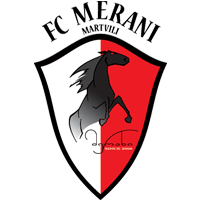 美拉尼
美拉尼
-
20:30
格鲁吉亚杯
未开赛森特尔迪亚
 0-0
0-0
 第比利斯迪纳摩
第比利斯迪纳摩
-
20:30
球会友谊赛
未开赛安纳
 0-0
0-0
 FC宾高
FC宾高
-
20:30
球会友谊赛
未开赛马特路易斯
 0-0
0-0
 鹿特丹斯巴达青年队
鹿特丹斯巴达青年队
-
20:30
球会友谊赛
未开赛阿贾克斯
 0-0
0-0
 梅赫伦
梅赫伦
-
20:30
球会友谊赛
未开赛温特图尔
 0-0
0-0
 弗赖堡B队
弗赖堡B队
-
20:30
球会友谊赛
未开赛埃姆迪积克
 0-0
0-0
 阿梅尔城青年队
阿梅尔城青年队
-
20:30
球会友谊赛
未开赛HSV胡克
 0-0
0-0
 斯蒂杜克
斯蒂杜克
-
20:30
马拉维超级联赛
未开赛卡龙加联
 0-0
0-0
 蓝鹰
蓝鹰
-
20:30
巴西米内罗州青年联赛
未开赛米纳斯U20
 0-0
0-0
 康塔格U20
康塔格U20
-
20:45
波兰甲级联赛
未开赛维德祖罗兹
 0-0
0-0
 卢宾扎格勒比
卢宾扎格勒比
-
21:00
AFC女子亚洲杯
未开赛新加坡女足
 0-0
0-0
 黎巴嫩女足
黎巴嫩女足
-
21:00
芬兰甲级联赛
未开赛SJK学院
 0-0
0-0
 查普斯
查普斯
-
21:00
拉脱维亚超级联赛
未开赛利耶帕亚
 0-0
0-0
 里加FC
里加FC
-
21:00
哈萨克斯坦超级联赛
未开赛阿拉木图凯拉特
 0-0
0-0
 卡伊萨尔
卡伊萨尔
-
21:00
哈萨克斯坦超级联赛
未开赛叶利迈塞米
 0-0
0-0
 热尼斯
热尼斯
-
21:00
球会友谊赛
未开赛曼彻斯特联
 0-0
0-0
 利兹联
利兹联
-
21:00
芬兰乙级联赛
未开赛EPS埃斯波
 0-0
0-0
 OLS奥卢
OLS奥卢
-
21:00
芬兰乙级联赛
未开赛罗瓦涅米
 0-0
0-0
 图尔库国际B队
图尔库国际B队
-
21:00
芬兰乙级联赛
未开赛拉迪恩雷帕斯
 0-0
0-0
 PEPO拉宾兰塔
PEPO拉宾兰塔
-
21:00
东南亚U23
未开赛东帝汶U23
 0-0
0-0
 泰国U23
泰国U23
-
21:00
挪丙
未开赛法纳
 0-0
0-0
 科德
科德
-
21:00
挪丙
未开赛弗约拉
 0-0
0-0
 奥斯图恩
奥斯图恩
-
21:00
挪丙
未开赛桑德菲杰B队
 0-0
0-0
 里昂格波
里昂格波
-
21:00
挪丙
未开赛维得比查
 0-0
0-0
 华亚格
华亚格
-
21:00
挪丙
未开赛法拉姆拉维克
 0-0
0-0
 奥特格宁兰B队
奥特格宁兰B队
-
21:00
挪丙
未开赛ORN侯登
 0-0
0-0
 海尔顿市
海尔顿市
-
21:00
挪丙
未开赛京兰堡斯B队
 0-0
0-0
 奥普沙尔
奥普沙尔
-
21:00
白俄罗斯甲级联赛
未开赛高美尔B队
 0-0
0-0
 明斯克B队
明斯克B队
-
21:00
瑞典超级联赛
未开赛尤尔加登
 0-0
0-0
 埃尔夫斯堡
埃尔夫斯堡
-
21:00
瑞典超级联赛
未开赛奥斯达
 0-0
0-0
 马尔默
马尔默
-
21:00
瑞典超甲级联赛
未开赛奥迪沃特
 0-0
0-0
 奥尔格里特
奥尔格里特
-
21:00
瑞典超甲级联赛
未开赛厄斯特松德
 0-0
0-0
 法尔肯堡
法尔肯堡
-
21:00
瑞典超甲级联赛
未开赛于默奥
 0-0
0-0
 奥雷布洛
奥雷布洛
-
21:00
刚果民主超级联赛
未开赛圣埃罗伊卢波波
 0-0
0-0
 维塔体育
维塔体育
-
21:00
威尔士联赛杯
未开赛马奇奥
 0-0
0-0
 亚分利多
亚分利多
-
21:00
威尔士联赛杯
未开赛伊尼希尔比恩斯
 0-0
0-0
 卡迪夫龙人
卡迪夫龙人
-
21:00
津巴布韦超级联赛
未开赛辛巴波拉
 0-0
0-0
 迪纳莫斯
迪纳莫斯
-
21:00
津巴布韦超级联赛
未开赛特赖安格尔
 0-0
0-0
 恩盖济铂
恩盖济铂
-
21:00
津巴布韦超级联赛
未开赛MWOS
 0-0
0-0
 铂金
铂金
-
21:00
津巴布韦超级联赛
未开赛卡普斯联
 0-0
0-0
 特隆
特隆
-
21:00
津巴布韦超级联赛
未开赛绿色燃料
 0-0
0-0
 比基塔矿产
比基塔矿产
-
21:00
津巴布韦超级联赛
未开赛玛尼卡钻石
 0-0
0-0
 赫伦塔尔斯FC
赫伦塔尔斯FC
-
21:00
津巴布韦超级联赛
未开赛奎奎联
 0-0
0-0
 雅达赫
雅达赫
-
21:00
津巴布韦超级联赛
未开赛基肯恩尼
 0-0
0-0
 卡里巴
卡里巴
-
21:00
巴拉圭乙级联赛
未开赛美洲太阳
 0-0
0-0
 独立FBC
独立FBC
-
21:00
俄罗斯甲级联赛
未开赛乌法
 0-0
0-0
 SKA哈巴罗夫斯克
SKA哈巴罗夫斯克
-
21:00
威尔士联赛杯
未开赛莱尔
 0-0
0-0
 卡亚士维斯
卡亚士维斯
-
21:00
爱尔兰足总杯
未开赛萨尔斯尔
 0-0
0-0
 圣迈克尔斯
圣迈克尔斯
-
21:00
巴西圣保罗州青年联赛
未开赛圣保罗青年队
 0-0
0-0
 巴西体育青年队
巴西体育青年队
-
21:00
球会友谊赛
未开赛巴拉城
 0-0
0-0
 空中巴士
空中巴士
-
21:00
球会友谊赛
未开赛卡纳芬
 0-0
0-0
 艾伯里斯特夫
艾伯里斯特夫
-
21:00
球会友谊赛
未开赛尼奈斯
 0-0
0-0
 比尔
比尔
-
21:00
球会友谊赛
未开赛查德顿
 0-0
0-0
 阿斯顿联
阿斯顿联
-
21:00
球会友谊赛
未开赛拉夫格尔
 0-0
0-0
 基拿云
基拿云
-
21:00
球会友谊赛
未开赛阿尔梅勒城
0-0
 乌姆沙拉尔
乌姆沙拉尔
-
21:00
球会友谊赛
未开赛梅彭
 0-0
0-0
 罗迪豪森
罗迪豪森
-
21:00
球会友谊赛
未开赛波鸿
 0-0
0-0
 哈尔科夫冶金1925
哈尔科夫冶金1925
-
21:00
国际友谊赛
未开赛孟加拉女足U20
 0-0
0-0
 斯里兰卡女足U20
斯里兰卡女足U20
-
21:00
球会友谊赛
未开赛尼斯
 0-0
0-0
 阿雅克肖
阿雅克肖
-
21:00
球会友谊赛
未开赛卡昂
 0-0
0-0
 昂热
昂热
-
21:00
球会友谊赛
未开赛汉诺威96
 0-0
0-0
 帕德博恩
帕德博恩
-
21:00
球会友谊赛
未开赛联合曼彻斯特
 0-0
0-0
 埃克塞特城
埃克塞特城
-
21:00
球会友谊赛
未开赛科尔温湾
 0-0
0-0
 斯泰利布里奇
斯泰利布里奇
-
21:00
球会友谊赛
未开赛圣保利业余队
 0-0
0-0
 杜塞尔多夫业余队
杜塞尔多夫业余队
-
21:00
球会友谊赛
未开赛阿尔马城
 0-0
0-0
 波塔当
波塔当
-
21:00
球会友谊赛
未开赛利马瓦迪
0-0
 科尔雷恩
科尔雷恩
-
21:00
球会友谊赛
未开赛邓根伦
 0-0
0-0
 拉夫利兰流浪者
拉夫利兰流浪者
-
21:00
球会友谊赛
取消格伦托兰
 0-0
0-0
 克里夫顿维尔
克里夫顿维尔
-
21:00
球会友谊赛
未开赛汉顿
 0-0
0-0
 云吉特
云吉特
-
21:00
球会友谊赛
未开赛卢加诺U21
 0-0
0-0
 YF尤文图斯
YF尤文图斯
-
21:00
球会友谊赛
未开赛斯巴肯堡
 0-0
0-0
 阿尔克马尔青年队
阿尔克马尔青年队
-
21:00
球会友谊赛
未开赛赫尔克里斯
 0-0
0-0
 格尔德恩
格尔德恩
-
21:00
球会友谊赛
未开赛怀特豪克
 0-0
0-0
 讷翰马科
讷翰马科
-
21:00
球会友谊赛
未开赛霍利韦尔
 0-0
0-0
 佩雷斯特维奇
佩雷斯特维奇
-
21:00
球会友谊赛
未开赛希伯尼安
 0-0
0-0
 博尔顿
博尔顿
-
21:00
球会友谊赛
未开赛纽伦堡
 0-0
0-0
 比勒菲尔德
比勒菲尔德
-
21:00
球会友谊赛
未开赛斯塔贝克
 0-0
0-0
 利恩
利恩
-
21:00
球会友谊赛
未开赛曼斯菲尔德
 0-0
0-0
 米德尔斯堡
米德尔斯堡
-
21:00
球会友谊赛
未开赛邓迪联
 0-0
0-0
 奥尔德姆
奥尔德姆
-
21:00
球会友谊赛
未开赛高华尤夫卡
 0-0
0-0
 LNZ切尔卡瑟
LNZ切尔卡瑟
-
21:00
爱U20
未开赛芬恩哈普斯U20
 0-0
0-0
 德罗赫达联U20
德罗赫达联U20
-
21:00
爱U20
未开赛都柏林大学U20
 0-0
0-0
 科克本市U20
科克本市U20
-
21:00
乌拉圭乙级联赛
未开赛巴萨内斯
 0-0
0-0
 南德阿美利加
南德阿美利加
-
21:00
球会友谊赛
未开赛克诺克布里达
 0-0
0-0
 阿尔斯
阿尔斯
-
21:00
球会友谊赛
未开赛兹沃勒
 0-0
0-0
 登德
登德
-
21:00
阿根廷青年联赛
未开赛圣米格尔U20
 0-0
0-0
 贝尔格拉诺U20
贝尔格拉诺U20
-
21:00
阿根廷青年联赛
未开赛洛斯安第斯U20
 0-0
0-0
 阿卡苏索U20
阿卡苏索U20
-
21:00
阿根廷青年联赛
未开赛男生队U20
 0-0
0-0
 维拉多尔米尼U20
维拉多尔米尼U20
-
21:00
巴青锦标
未开赛索布拉丁荷U20
 0-0
0-0
 瓦尔帕莱索U20
瓦尔帕莱索U20
-
21:00
球会友谊赛
未开赛MTK布达佩斯B队
 0-0
0-0
 普达洛克
普达洛克
-
21:00
巴西米内罗州青年联赛
未开赛米内罗竞技青年队
 0-0
0-0
 克鲁塞罗青年队
克鲁塞罗青年队
-
21:30
黎巴嫩联赛
未开赛贝鲁特宁静
 0-0
0-0
 贝鲁特支持者
贝鲁特支持者
-
21:30
威尔士联赛杯
未开赛阿曼福德
 0-0
0-0
 卡迪夫城U21
卡迪夫城U21
-
21:30
威尔士联赛杯
未开赛卡姆比利安
 0-0
0-0
 特奥温星队
特奥温星队
-
21:30
俄罗斯甲级联赛
未开赛雅罗斯拉夫尔辛尼克
 0-0
0-0
 乌拉尔
乌拉尔
-
21:30
威尔士联赛杯
未开赛卡马顿
 0-0
0-0
 斯旺西U21
斯旺西U21
-
21:30
俄乙A
未开赛库尔斯克前卫
 0-0
0-0
 罗迪纳莫斯科B队
罗迪纳莫斯科B队
-
21:30
球会友谊赛
未开赛穆瑟维茨
 0-0
0-0
 RB莱比锡
RB莱比锡
-
21:30
球会友谊赛
未开赛艾默当踢球者
 0-0
0-0
 云达不莱梅
云达不莱梅
-
21:30
球会友谊赛
未开赛拉路维尔
 0-0
0-0
 那慕尔
那慕尔
-
21:30
球会友谊赛
未开赛霍芬海姆
 0-0
0-0
 艾禾斯堡
艾禾斯堡
-
21:30
球会友谊赛
取消热那亚
 0-0
0-0
 凯泽斯劳滕
凯泽斯劳滕
-
21:30
球会友谊赛
未开赛博内斯联
 0-0
0-0
 布罗克斯本
布罗克斯本
-
21:30
冰岛丁级联赛
未开赛禾利达仁迪
 0-0
0-0
 KFS韦斯文尼查
KFS韦斯文尼查
-
21:30
球会友谊赛
未开赛LASK林茨
 0-0
0-0
 柏林联合
柏林联合
-
21:30
球会友谊赛
未开赛泰波特
 0-0
0-0
 伦卡蒂FC
伦卡蒂FC
-
21:45
苏丹超级联赛
延迟美格赫尼
 0-0
0-0
 扎马拉鲁瓦巴
扎马拉鲁瓦巴
-
21:45
苏丹超级联赛
延迟阿马勒阿特巴拉
 0-0
0-0
 阿尔马里克
阿尔马里克
-
22:00
白俄罗斯女足超级联赛
未开赛第聂伯女足
 0-0
0-0
 高美尔女足
高美尔女足
-
22:00
俄罗斯女子超级联赛
未开赛拉占女足
 0-0
0-0
 罗斯托夫女足
罗斯托夫女足
-
22:00
芬兰超级联赛
未开赛VPS瓦萨
 0-0
0-0
 古比斯
古比斯
-
22:00
冰岛超级联赛
未开赛贝雷达比历克
 0-0
0-0
 维斯特里
维斯特里
-
22:00
挪丙
未开赛瓦勒伦加B队
 0-0
0-0
 阿桑尼B队
阿桑尼B队
-
22:00
挪丙
未开赛德杰夫
 0-0
0-0
 维京B队
维京B队
-
22:00
挪丙
未开赛玛达
 0-0
0-0
 索勒
索勒
-
22:00
挪丙
未开赛托瓦斯塔德
 0-0
0-0
 海于格松B队
海于格松B队
-
22:00
挪丙
未开赛奥斯陆火车头
 0-0
0-0
 斯巴达萨普斯堡B队
斯巴达萨普斯堡B队
-
22:00
白俄罗斯甲级联赛
未开赛明斯克大学X实验室
 0-0
0-0
 斯洛尼姆
斯洛尼姆
-
22:00
芬兰乙级联赛
未开赛于韦斯屈莱
 0-0
0-0
 坦佩雷
坦佩雷
-
22:00
芬兰乙级联赛
未开赛洪卡
 0-0
0-0
 HAPK
HAPK
-
22:00
芬兰乙级联赛
未开赛奇芬
 0-0
0-0
 努尔米耶尔维NJS
努尔米耶尔维NJS
-
22:00
球会友谊赛
未开赛凯尔特人
 0-0
0-0
 纽卡斯尔联
纽卡斯尔联
-
22:00
苏格兰联赛杯
未开赛科夫流浪者
 0-0
0-0
 福尔柯克
福尔柯克
-
22:00
苏格兰联赛杯
未开赛斯巴顿斯
 0-0
0-0
 布里金城
布里金城
-
22:00
苏格兰联赛杯
未开赛爱丁堡城
 0-0
0-0
 斯青威尔
斯青威尔
-
22:00
苏格兰联赛杯
未开赛南部女王
 0-0
0-0
 罗斯郡
罗斯郡
-
22:00
苏格兰联赛杯
未开赛艾洛亚
 0-0
0-0
 邓迪FC
邓迪FC
-
22:00
苏格兰联赛杯
未开赛蒙特罗斯
 0-0
0-0
 保尼玫瑰
保尼玫瑰
-
22:00
苏格兰联赛杯
未开赛艾尔联
 0-0
0-0
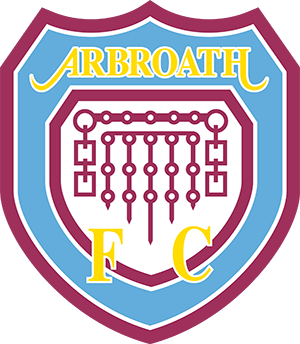 阿布罗斯
阿布罗斯
-
22:00
苏格兰联赛杯
未开赛圣米伦
 0-0
0-0
 安南竞技
安南竞技
-
22:00
苏格兰联赛杯
未开赛邓巴顿
 0-0
0-0
 邓弗姆林
邓弗姆林
-
22:00
苏格兰联赛杯
未开赛埃尔金城
 0-0
0-0
 东基尔布莱德
东基尔布莱德
-
22:00
苏格兰联赛杯
未开赛因弗内斯
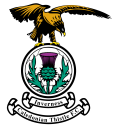 0-0
0-0
 圣约翰斯通
圣约翰斯通
-
22:00
苏格兰联赛杯
未开赛彼得黑德
 0-0
0-0
 克莱德
克莱德
-
22:00
苏格兰联赛杯
未开赛斯坦豪斯摩尔
 0-0
0-0
 马瑟韦尔
马瑟韦尔
-
22:00
苏格兰联赛杯
未开赛凯尔蒂赫斯
 0-0
0-0
 东法夫郡
东法夫郡
-
22:00
苏格兰联赛杯
未开赛利文斯顿
 0-0
0-0
 布罗拉流浪者
布罗拉流浪者
-
22:00
挪威超级联赛
未开赛莫尔德
 0-0
0-0
 斯托姆加斯特
斯托姆加斯特
-
22:00
芬兰乙级联赛
未开赛HJS学院
 0-0
0-0
 亚特兰提斯B
亚特兰提斯B
-
22:00
阿根廷丙级曼特波里顿联赛
未开赛尤潘基
 0-0
0-0
 祖文图德尤尼达
祖文图德尤尼达
-
22:00
丹麦甲级联赛
未开赛霍森斯
 0-0
0-0
 奥胡斯费马
奥胡斯费马
-
22:00
球会友谊赛
未开赛雷丁
 0-0
0-0
 托特纳姆热刺
托特纳姆热刺
-
22:00
蒙古足球超级联赛
未开赛德仁FC
 0-0
0-0
 乌兰巴托FC
乌兰巴托FC
-
22:00
蒙古足球超级联赛
未开赛SP猎鹰
 0-0
0-0
 汗加里德
汗加里德
-
22:00
蒙古足球超级联赛
未开赛浩日莫尔
 0-0
0-0
 猎人FC
猎人FC
-
22:00
蒙古足球超级联赛
未开赛克布多
 0-0
0-0
 伊尔赤姆
伊尔赤姆
-
22:00
蒙古足球超级联赛
未开赛阿扎加努德
 0-0
0-0
 布雷拉伊奇
布雷拉伊奇
-
22:00
俄罗斯甲级联赛
未开赛乌里扬诺夫斯克伏尔加
 0-0
0-0
 伏尔加格勒
伏尔加格勒
-
22:00
爱尔兰足总杯
未开赛宾高凯尔特
 0-0
0-0
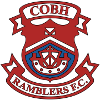 科布漫步者
科布漫步者
-
22:00
爱尔兰女全国联盟
未开赛都柏林波希米亚人女足
 0-0
0-0
 沃特福德联队女足
沃特福德联队女足
-
22:00
爱尔兰女全国联盟
未开赛斯莱戈流浪女足
 0-0
0-0
 威克斯福德青年女足
威克斯福德青年女足
-
22:00
巴西圣保罗州青年联赛
未开赛帕尔梅拉斯青年队
 0-0
0-0
 阿拉萨图巴青年队
阿拉萨图巴青年队
-
22:00
格鲁吉亚杯
未开赛山姆特斯克赫
 0-0
0-0
 奥迪希1919
奥迪希1919
-
22:00
乌拉圭乙级联赛
未开赛雷提斯塔
 0-0
0-0
 阿尔比恩
阿尔比恩
-
22:00
球会友谊赛
未开赛瓦杜兹
 0-0
0-0
 慕尼黑1860
慕尼黑1860
-
22:00
球会友谊赛
未开赛艾比安流浪
 0-0
0-0
 圣美伦后备队
圣美伦后备队
-
22:00
球会友谊赛
未开赛索斯诺维克
 0-0
0-0
 特里内茨
特里内茨
-
22:00
球会友谊赛
未开赛布罗姆利
 0-0
0-0
 切尔西U21
切尔西U21
-
22:00
球会友谊赛
未开赛牛津城
 0-0
0-0
 查尔顿U21
查尔顿U21
-
22:00
球会友谊赛
未开赛温彻斯特城
 0-0
0-0
 女王公园巡游者U21
女王公园巡游者U21
-
22:00
球会友谊赛
未开赛普夫迪夫斯巴达
 0-0
0-0
 迪米特洛夫格拉德
迪米特洛夫格拉德
-
22:00
球会友谊赛
未开赛鲁克维尼基
 0-0
0-0
 库利基夫
库利基夫
-
22:00
球会友谊赛
未开赛道彻斯特
 0-0
0-0
 罗瑟汉姆
罗瑟汉姆
-
22:00
球会友谊赛
未开赛圣阿尔班斯
 0-0
0-0
 卢顿U21
卢顿U21
-
22:00
球会友谊赛
未开赛博瑞汉姆
 0-0
0-0
 托特纳姆热刺U21
托特纳姆热刺U21
-
22:00
球会友谊赛
未开赛凯利瑟罗
 0-0
0-0
 利克镇
利克镇
-
22:00
球会友谊赛
未开赛希治
 0-0
0-0
 皇家贝德福德
皇家贝德福德
-
22:00
球会友谊赛
未开赛比勒瑞卡
 0-0
0-0
 奥尔德肖特
奥尔德肖特
-
22:00
球会友谊赛
未开赛卡辛巴斯凯
 0-0
0-0
 米哈洛夫采
米哈洛夫采
-
22:00
球会友谊赛
未开赛托基联
 0-0
0-0
 纽波特郡
纽波特郡
-
22:00
球会友谊赛
未开赛马科斯菲尔德镇
 0-0
0-0
 夏利法斯
夏利法斯
-
22:00
球会友谊赛
未开赛罗斯托克
 0-0
0-0
 阿斯顿维拉
阿斯顿维拉
-
22:00
球会友谊赛
未开赛图恩
 0-0
0-0
 阿劳
阿劳
-
22:00
球会友谊赛
未开赛格拉茨风暴
 0-0
0-0
 汉堡
汉堡
-
22:00
球会友谊赛
未开赛亚眠
 0-0
0-0
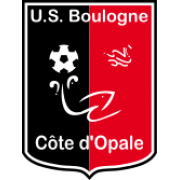 布洛涅
布洛涅
-
22:00
球会友谊赛
未开赛米尔顿凯恩斯
 0-0
0-0
 唐卡斯特
唐卡斯特
-
22:00
球会友谊赛
未开赛萨顿联
 0-0
0-0
 AFC温布尔登
AFC温布尔登
-
22:00
球会友谊赛
未开赛阿克灵顿
 0-0
0-0
 维冈竞技
维冈竞技
-
22:00
冰岛丙级联赛
未开赛伊米尔
 0-0
0-0
 堤达斯托尔
堤达斯托尔
-
22:00
球会友谊赛
未开赛比夏史托福
 0-0
0-0
 绍森德
绍森德
-
22:00
球会友谊赛
未开赛阿尔费登镇
 0-0
0-0
 切斯特菲尔德
切斯特菲尔德
-
22:00
球会友谊赛
未开赛斯图尔特港
 0-0
0-0
 拉恩
拉恩
-
22:00
球会友谊赛
未开赛谭禾夫
 0-0
0-0
 巴罗
巴罗
-
22:00
球会友谊赛
未开赛特鲁罗城
 0-0
0-0
 法尔茅夫
法尔茅夫
-
22:00
球会友谊赛
未开赛伯明翰
 0-0
0-0
 伯顿
伯顿
-
22:00
球会友谊赛
未开赛诺丁汉森林
 0-0
0-0
 摩纳哥
摩纳哥
-
22:00
球会友谊赛
未开赛克劳利
 0-0
0-0
 朴茨茅斯
朴茨茅斯
-
22:00
球会友谊赛
未开赛梅斯
 0-0
0-0
 红星
红星
-
22:00
球会友谊赛
未开赛什鲁斯伯里
 0-0
0-0
 京达米士特
京达米士特
-
22:00
球会友谊赛
未开赛斯达
 0-0
0-0
 斯吉德
斯吉德
-
22:00
球会友谊赛
未开赛耶奥维尔
 0-0
0-0
 布里斯托流浪
布里斯托流浪
-
22:00
冰岛丁级联赛
未开赛KF哈夫尼尔
 0-0
0-0
 伊尔利迪
伊尔利迪
-
22:00
球会友谊赛
未开赛史塔夫流浪
 0-0
0-0
 纽宁顿
纽宁顿
-
22:00
球会友谊赛
未开赛梅德斯托联
 0-0
0-0
 米尔沃尔U21
米尔沃尔U21
-
22:00
球会友谊赛
未开赛威尔连德流浪
 0-0
0-0
 特沃顿
特沃顿
-
22:00
球会友谊赛
未开赛加福斯镇
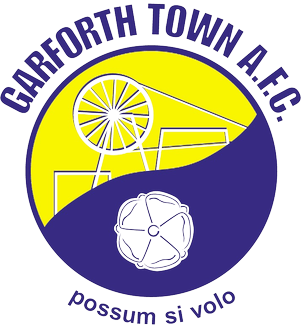 0-0
0-0
 莫斯莱
莫斯莱
-
22:00
球会友谊赛
未开赛瓦斯克哈尔
 0-0
0-0
 鲁昂
鲁昂
-
22:00
球会友谊赛
未开赛沃森
 0-0
0-0
 切尔滕纳姆
切尔滕纳姆
-
22:00
球会友谊赛
未开赛巴什利
 0-0
0-0
 巴顿流浪者
巴顿流浪者
-
22:00
球会友谊赛
未开赛菲尔德
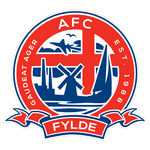 0-0
0-0
 卡莱尔联
卡莱尔联
-
22:00
球会友谊赛
未开赛贝德丰特体育
 0-0
0-0
 诺斯伍德
诺斯伍德
-
22:00
球会友谊赛
未开赛布莱斯史巴登斯
 0-0
0-0
 盖茨黑德
盖茨黑德
-
22:00
球会友谊赛
未开赛彻特西镇
 0-0
0-0
 汉普顿列治蒙堡
汉普顿列治蒙堡
-
22:00
球会友谊赛
未开赛切斯特
 0-0
0-0
 索尔福德市
索尔福德市
-
22:00
球会友谊赛
未开赛茨伯翰
 0-0
0-0
 斯文登
斯文登
-
22:00
球会友谊赛
未开赛克雷山谷文米尔斯
 0-0
0-0
 沃金
沃金
-
22:00
球会友谊赛
未开赛达特福德队
 0-0
0-0
 东伯尼
东伯尼
-
22:00
球会友谊赛
未开赛亨默亨普斯特德
 0-0
0-0
 斯伯丁
斯伯丁
-
22:00
球会友谊赛
未开赛多德勒支
 0-0
0-0
 SBV精英
SBV精英
-
22:00
球会友谊赛
未开赛多佛
 0-0
0-0
 阿森纳U19
阿森纳U19
-
22:00
球会友谊赛
未开赛法恩堡
 0-0
0-0
 南安普顿U21
南安普顿U21
-
22:00
球会友谊赛
未开赛福马亭联
 0-0
0-0
 阿伯丁后备队
阿伯丁后备队
-
22:00
球会友谊赛
未开赛格洛斯特城
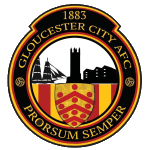 0-0
0-0
 巴利镇
巴利镇
-
22:00
球会友谊赛
未开赛韦德斯
 0-0
0-0
 卡域克流浪
卡域克流浪
-
22:00
球会友谊赛
未开赛海沃思镇
 0-0
0-0
 史云顿超级海军
史云顿超级海军
-
22:00
球会友谊赛
未开赛勒色赫
 0-0
0-0
 汤桥天使
汤桥天使
-
22:00
球会友谊赛
未开赛林肯联
 0-0
0-0
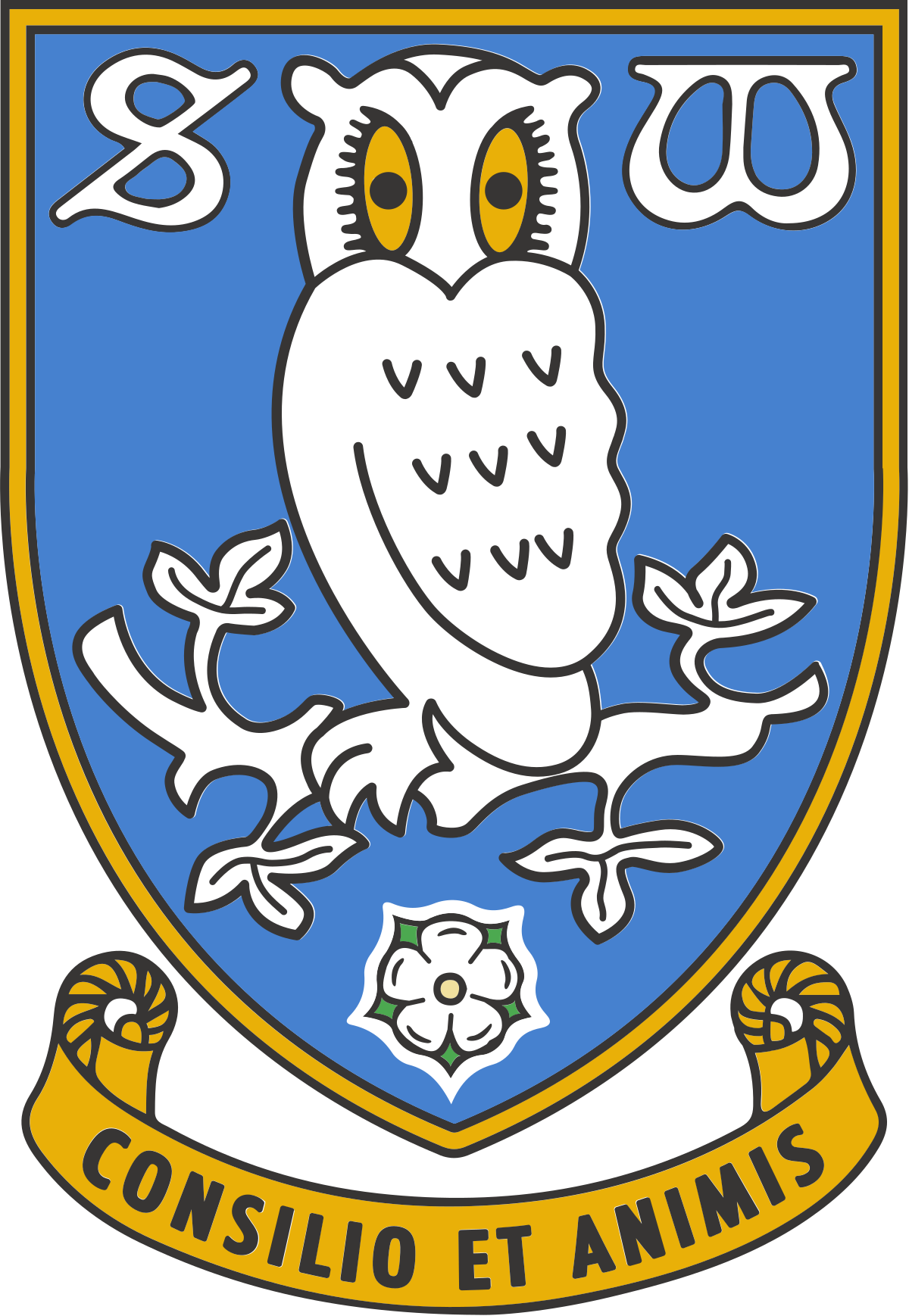 谢周三
谢周三
-
22:00
球会友谊赛
未开赛梅顿赫德联
 0-0
0-0
 西汉姆联U19
西汉姆联U19
-
22:00
球会友谊赛
未开赛海运联
 0-0
0-0
 莫雷坎比
莫雷坎比
-
22:00
球会友谊赛
未开赛伊森堡统治者
 0-0
0-0
 洛特维哈达马尔
洛特维哈达马尔
-
22:00
球会友谊赛
未开赛肖林
 0-0
0-0
 杜金流浪者
杜金流浪者
-
22:00
球会友谊赛
未开赛斯彭尼穆尔城
 0-0
0-0
 史托港U21
史托港U21
-
22:00
球会友谊赛
未开赛史蒂爱文斯城
 0-0
0-0
 彼德堡体育
彼德堡体育
-
22:00
球会友谊赛
未开赛圣尼托斯镇
 0-0
0-0
 斯坦福
斯坦福
-
22:00
球会友谊赛
未开赛斯托克顿镇
 0-0
0-0
 达宁顿
达宁顿
-
22:00
球会友谊赛
未开赛萨德贝利
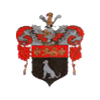 0-0
0-0
 布伦特里
布伦特里
-
22:00
球会友谊赛
未开赛沃尔顿赫瑟姆
 0-0
0-0
 达根汉姆
达根汉姆
-
22:00
球会友谊赛
未开赛沃灵顿
 0-0
0-0
 南港队
南港队
-
22:00
球会友谊赛
未开赛温伯尼镇
 0-0
0-0
 萨里斯贝利
萨里斯贝利
-
22:00
球会友谊赛
未开赛威顿
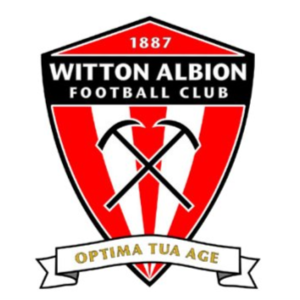 0-0
0-0
 诺斯维奇维多利亚
诺斯维奇维多利亚
-
22:00
球会友谊赛
未开赛帕克盖特
 0-0
0-0
 雷特福德联
雷特福德联
-
22:00
球会友谊赛
未开赛夸恩
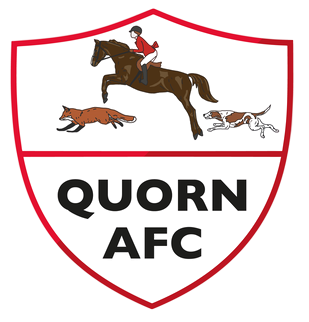 0-0
0-0
 柯尔比
柯尔比
-
22:00
球会友谊赛
未开赛雷德布里奇
 0-0
0-0
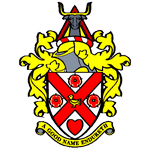 侯恩乔奇
侯恩乔奇
-
22:00
球会友谊赛
未开赛哈洛贾特
 0-0
0-0
 巴恩斯利
巴恩斯利
-
22:00
球会友谊赛
未开赛切尔滕汉姆
 0-0
0-0
 韦康比流浪者
韦康比流浪者
-
22:00
球会友谊赛
未开赛车姆斯福特
 0-0
0-0
 巴克利城
巴克利城
-
22:00
球会友谊赛
未开赛吉英瑟莱
 0-0
0-0
 利兹联U21
利兹联U21
-
22:00
球会友谊赛
未开赛罗奇代尔
 0-0
0-0
 格林斯比
格林斯比
-
22:00
球会友谊赛
未开赛吉林汉姆
 0-0
0-0
 卢顿
卢顿
-
22:00
球会友谊赛
未开赛普利茅斯
 0-0
0-0
 塔维斯托克
塔维斯托克
-
22:00
球会友谊赛
未开赛布莱克本
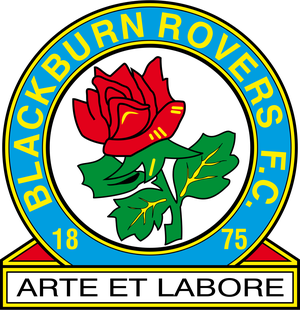 0-0
0-0
 埃弗顿
埃弗顿
-
22:00
球会友谊赛
未开赛布莱克浦
 0-0
0-0
 西布罗姆维奇
西布罗姆维奇
-
22:00
球会友谊赛
未开赛奥地利卢斯特瑙
 0-0
0-0
 奥格斯堡
奥格斯堡
-
22:00
球会友谊赛
未开赛开姆尼茨
 0-0
0-0
 马格德堡
马格德堡
-
22:00
球会友谊赛
未开赛爱尔福特红白
 0-0
0-0
 布伦瑞克二世
布伦瑞克二世
-
22:00
球会友谊赛
未开赛奥德纳尔
 0-0
0-0
 布鲁日B队
布鲁日B队
-
22:00
球会友谊赛
未开赛波士顿联队
 0-0
0-0
 彼得堡联
彼得堡联
-
22:00
球会友谊赛
未开赛尼尔吉哈萨
 0-0
0-0
 梅索科菲德
梅索科菲德
-
22:00
芬兰丙级联赛
未开赛蓬帕
 0-0
0-0
 卡吉哈
卡吉哈
-
22:00
球会友谊赛
未开赛弗罗茨瓦夫B队
 0-0
0-0
 克拉科维亚B队
克拉科维亚B队
-
22:00
球会友谊赛
未开赛格里文马切尔
 0-0
0-0
 伯德尼亚伯堡
伯德尼亚伯堡
-
22:00
玻利联U19
未开赛瓜比拉U19
 0-0
0-0
 皇家托马亚波U19
皇家托马亚波U19
-
22:00
巴马全联
未开赛冠军学院
0-0
 圣米格利托体育后备队
圣米格利托体育后备队
-
22:00
球会友谊赛
未开赛拉格比镇
 0-0
0-0
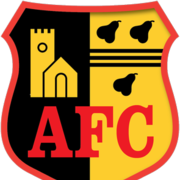 艾华乔奇
艾华乔奇
-
22:00
球会友谊赛
未开赛南希尔兹
 0-0
0-0
 希尔登
希尔登
-
22:00
巴青锦标
未开赛巴西国际青年队
 0-0
0-0
 格雷米奥青年队
格雷米奥青年队
-
22:00
冰岛丁级联赛
未开赛阿斯韦德利尔
 0-0
0-0
 夏威拉格地
夏威拉格地
-
22:00
球会友谊赛
未开赛拉米兰治
 0-0
0-0
 罗当治
罗当治
-
22:30
球会友谊赛
未开赛十字军
 0-0
0-0
 纽因顿
纽因顿
-
22:30
球会友谊赛
未开赛阿尔克马尔
 0-0
0-0
 萨格勒布火车头
萨格勒布火车头
-
22:30
智利女甲
未开赛塞雷那女足
 0-0
0-0
 圣马洛科斯女足
圣马洛科斯女足
-
23:00
挪威乙级联赛
未开赛乐范格尔
 0-0
0-0
 侯尼霍斯
侯尼霍斯
-
23:00
哈萨克斯坦超级联赛
未开赛奥基捷佩斯
 0-0
0-0
 乌利塔哲兹卡兹甘
乌利塔哲兹卡兹甘
-
23:00
俄罗斯女子超级联赛
未开赛莫斯科迪纳摩女足
 0-0
0-0
 圣彼得堡泽尼特女足
圣彼得堡泽尼特女足
-
23:00
白俄罗斯甲级联赛
未开赛波里索夫巴特B队
 0-0
0-0
 坎普罗姆戈梅尔
坎普罗姆戈梅尔
-
23:00
白俄罗斯甲级联赛
未开赛沃尔纳平斯克
 0-0
0-0
 奥斯特罗维茨
奥斯特罗维茨
-
23:00
芬兰甲级联赛
未开赛PK35万塔
 0-0
0-0
 克鲁比04
克鲁比04
-
23:00
拉脱维亚超级联赛
未开赛美塔里加
 0-0
0-0
 里加足球学院
里加足球学院
-
23:00
芬兰乙级联赛
未开赛中新地
 0-0
0-0
 亚特兰提斯
亚特兰提斯
-
23:00
芬兰乙级联赛
未开赛JS大力神
 0-0
0-0
 SJK阿卡泰米阿B队
SJK阿卡泰米阿B队
-
23:00
瑞典超甲级联赛
未开赛桑德维根斯
 0-0
0-0
 瓦斯特拉斯
瓦斯特拉斯
-
23:00
捷克甲级联赛
未开赛特普利斯
 0-0
0-0
 兹林
兹林
-
23:00
捷克甲级联赛
未开赛卡尔维纳
 0-0
0-0
 布拉格杜克拉
布拉格杜克拉
-
23:00
捷克甲级联赛
未开赛波希米亚1905
 0-0
0-0
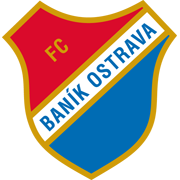 俄斯特拉发
俄斯特拉发
-
23:00
捷克乙组联赛
未开赛塔波斯科
 0-0
0-0
 普罗斯捷约夫
普罗斯捷约夫
-
23:00
摩尔多瓦甲级联赛
未开赛巴尔蒂
 0-0
0-0
 基希讷乌野牛
基希讷乌野牛
-
23:00
俄罗斯超级联赛
未开赛莫斯科火车头
 0-0
0-0
 索契
索契
-
23:00
俄罗斯甲级联赛
未开赛莫斯科鱼雷
 0-0
0-0
 车里雅宾斯克
车里雅宾斯克
-
23:00
德国戊级联赛
未开赛贡德尔芬根
 0-0
0-0
 FC斯特姆豪岑贝格
FC斯特姆豪岑贝格
-
23:00
巴西里约州甲级联赛
未开赛班古竞技
 0-0
0-0
 欧美利坚诺RJ
欧美利坚诺RJ
-
23:00
球会友谊赛
未开赛MTK布达佩斯
 0-0
0-0
 科马尔诺
科马尔诺
-
23:00
球会友谊赛
未开赛都灵
 0-0
0-0
 因戈尔施塔特
因戈尔施塔特
-
23:00
球会友谊赛
未开赛波德布雷佐瓦
 0-0
0-0
 国际巴迪斯拉华
国际巴迪斯拉华
-
23:00
球会友谊赛
未开赛科洛姆纳
 0-0
0-0
 图拉兵工厂B队
图拉兵工厂B队
-
23:00
球会友谊赛
未开赛霍芬海姆青年队
 0-0
0-0
 斯图加特踢球者
斯图加特踢球者
-
23:00
球会友谊赛
未开赛扑雷索夫
 0-0
0-0
 基斯华达
基斯华达
-
23:00
球会友谊赛
未开赛前进之鹰
 0-0
0-0
 塞萨洛尼基
塞萨洛尼基
-
23:00
球会友谊赛
未开赛圣图尔登
 0-0
0-0
 胡拜尔库迪西亚
胡拜尔库迪西亚
-
23:00
球会友谊赛
未开赛坎布尔
 0-0
0-0
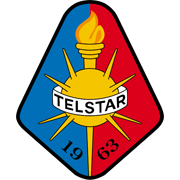 特尔斯达
特尔斯达
-
23:00
球会友谊赛
未开赛沃尔夫斯贝格
 0-0
0-0
 伊斯特拉1961
伊斯特拉1961
-
23:00
球会友谊赛
未开赛瓦尔津
 0-0
0-0
 阿维什镇
阿维什镇
-
23:00
球会友谊赛
未开赛特鲁瓦
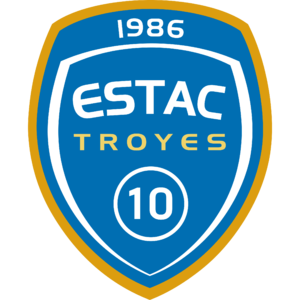 0-0
0-0
 格勒诺布尔
格勒诺布尔
-
23:00
球会友谊赛
未开赛勒皮
 0-0
0-0
 克莱蒙
克莱蒙
-
23:00
球会友谊赛
未开赛奥地利萨尔斯堡
 0-0
0-0
 多特蒙德二队
多特蒙德二队
-
23:00
球会友谊赛
未开赛沃伦塔利
 0-0
0-0
 鲁容贝罗克
鲁容贝罗克
-
23:00
球会友谊赛
未开赛奥洛穆茨B队
 0-0
0-0
 布尔诺B队
布尔诺B队
-
23:00
球会友谊赛
未开赛休达
 0-0
0-0
 诺斯青年CF
诺斯青年CF
-
23:00
球会友谊赛
未开赛圣珀尔滕女足
 0-0
0-0
 斯洛瓦科女足
斯洛瓦科女足
-
23:00
球会友谊赛
未开赛菲尔特
 0-0
0-0
 哈德斯菲尔德
哈德斯菲尔德
-
23:00
球会友谊赛
未开赛卡斯帕萨
 0-0
0-0
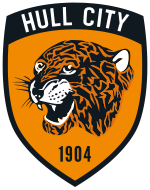 赫尔城
赫尔城
-
23:00
球会友谊赛
未开赛吕米伊瓦列里耶斯
 0-0
0-0
 普瑞兰斯
普瑞兰斯
-
23:00
球会友谊赛
未开赛波罗尼
 0-0
0-0
 尼特拉
尼特拉
-
23:00
球会友谊赛
未开赛凡尔赛
 0-0
0-0
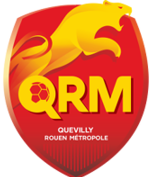 奎维利
奎维利
-
23:00
球会友谊赛
未开赛埃斯托里尔
 0-0
0-0
 艾华卡
艾华卡
-
23:00
球会友谊赛
未开赛FAC维也纳
 0-0
0-0
 维也纳新城
维也纳新城
-
23:00
球会友谊赛
未开赛汉诺威96
 0-0
0-0
 帕德博恩
帕德博恩
-
23:00
球会友谊赛
未开赛哥茲塔比
 0-0
0-0
 乌克瓦
乌克瓦
-
23:00
球会友谊赛
未开赛埃施青年
 0-0
0-0
 卡那斯
卡那斯
-
23:00
球会友谊赛
未开赛罗佐瓦
 0-0
0-0
 內塞伯尔
內塞伯尔
-
23:00
球会友谊赛
未开赛卡利亚里
 0-0
0-0
 奥斯皮塔莱托
奥斯皮塔莱托
-
23:00
球会友谊赛
未开赛贝内文托
 0-0
0-0
 罗马尼亚U20
罗马尼亚U20
-
23:00
哥伦比亚U20联赛
未开赛贝伦阿尔科萨拉戈萨U20
 0-0
0-0
 雷昂内斯 U20
雷昂内斯 U20
-
23:00
球会友谊赛
未开赛维多萨
 0-0
0-0
 斯特鲁姆斯卡
斯特鲁姆斯卡
-
23:15
球会友谊赛
未开赛巴斯蒂亚
 0-0
0-0
 欧巴涅
欧巴涅
-
23:30
波兰甲级联赛
未开赛华沙普洛克
 0-0
0-0
 凯尔采科罗纳
凯尔采科罗纳
-
23:30
瑞典超级联赛
未开赛代格福什
 0-0
0-0
 哥德堡盖斯
哥德堡盖斯
-
23:30
波兰乙级联赛
未开赛莱茨纳
 0-0
0-0
 比托姆
比托姆
-
23:30
罗马尼亚甲级联赛
未开赛克卢日大学
 0-0
0-0
 UTA阿拉德
UTA阿拉德
-
23:30
斯洛文尼亚甲级联赛
未开赛比摩治
 0-0
0-0
 多姆扎勒
多姆扎勒
-
23:30
球会友谊赛
未开赛南特
 0-0
0-0
 甘冈
甘冈
-
23:30
球会友谊赛
未开赛洛桑体育队
 0-0
0-0
 布鲁塞尔
布鲁塞尔
-
23:30
球会友谊赛
未开赛贝尔廷齐
 0-0
0-0
 纳吉卡尼塞
纳吉卡尼塞
-
23:30
球会友谊赛
未开赛比拿斯卡
 0-0
0-0
 喀泽夫
喀泽夫
-
23:30
球会友谊赛
未开赛威尼斯
 0-0
0-0
 皇家维琴察
皇家维琴察
-
23:30
球会友谊赛
未开赛佩利斯特
 0-0
0-0
 特拉亚尔
特拉亚尔
-
23:30
球会友谊赛
未开赛韦伦桑丹斯基
 0-0
0-0
 杜卡吉尼
杜卡吉尼
-
23:30
球会友谊赛
未开赛马拉多特DG
 0-0
0-0
 赛利亚
赛利亚
-
23:30
球会友谊赛
未开赛西甘德
 0-0
0-0
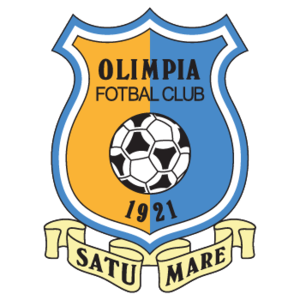 萨图马雷奥林匹亚
萨图马雷奥林匹亚
-
 [object Object]
[object Object]
2025-07-19 06:00:00
[object Object]
![[object Object]](https://img.thesports.com/basketball/team/4150a647c6e381a69980e98bb86582a5.png) VS
VS
60-62![[object Object]](https://img.thesports.com/basketball/team/06e7bde6cca98873fe971fad4e67a9b6.png) [object Object]
[object Object]
-
 [object Object]
[object Object]
2025-07-19 06:00:00
[object Object]
![[object Object]](https://img.thesports.com/basketball/team/6cca6a4f293f94146020d727649011ca.png) VS
VS
64-61![[object Object]](https://img.thesports.com/basketball/team/0d784b40dc04f4ff28cc63f153285e99.png) [object Object]
[object Object]
-
 [object Object]
[object Object]
2025-07-19 06:30:00
[object Object]
![[object Object]](https://img.thesports.com/basketball/team/1e5a5790095547388f55ead834887ad5.png) VS
VS
30-25![[object Object]](https://img.thesports.com/basketball/team/a1213643c81510799e117befed358956.png) [object Object]
[object Object]
-
 [object Object]
[object Object]
2025-07-19 07:00:00
[object Object]
![[object Object]](https://img.thesports.com/basketball/team/172138a954c51bb257ac1ebaa52f01a1.png) VS
VS
32-33![[object Object]](https://img.thesports.com/basketball/team/ff7ccef6a6b79c6417ee8367946b0aec.png) [object Object]
[object Object]
-
 [object Object]
[object Object]
2025-07-19 08:00:00
[object Object]
![[object Object]](https://img.thesports.com/basketball/team/9148b52f352b2d9190a3fc03c30839c8.png) VS
VS
0-0![[object Object]](https://img.thesports.com/basketball/team/89bcbd582c1b432180d897b8d96cdb4a.png) [object Object]
[object Object]
-
 [object Object]
[object Object]
2025-07-19 08:00:00
[object Object]
![[object Object]](https://img.thesports.com/basketball/team/f15ed15d914b6a608e9a396f03c755b0.png) VS
VS
0-0![[object Object]](https://img.thesports.com/basketball/team/8c88df221129169246c5b8a82955fa34.png) [object Object]
[object Object]
-
 [object Object]
[object Object]
2025-07-19 08:15:00
[object Object]
![[object Object]](https://img.thesports.com/basketball/team/c9380fff0bd01dca2a86732794439e29.png) VS
VS
0-0![[object Object]](https://img.thesports.com/basketball/team/bb41c1c49ea5796d0f6e6ab5417eefe2.png) [object Object]
[object Object]
-
 [object Object]
[object Object]
2025-07-19 09:00:00
[object Object]
![[object Object]](https://img.thesports.com/basketball/team/2602b893bb3f8d381a5b0d978fad74e1.png) VS
VS
0-0![[object Object]](https://img.thesports.com/basketball/team/6f313b682482799762cf60dbc30dbfae.png) [object Object]
[object Object]
-
 [object Object]
[object Object]
2025-07-19 09:15:00
[object Object]
![[object Object]](https://img.thesports.com/basketball/team/ba73057a06adcde76dced2475f0ed320.png) VS
VS
0-0![[object Object]](https://img.thesports.com/basketball/team/40386a0dcea3d44b828aa761493da1d2.png) [object Object]
[object Object]
-
 [object Object]
[object Object]
2025-07-19 09:15:00
[object Object]
![[object Object]](https://img.thesports.com/basketball/team/845c31c35bb19106d8cbd2b27a1c284b.png) VS
VS
0-0![[object Object]](https://img.thesports.com/basketball/team/f96e7b2222f2433f86baf5315c4f047f.png) [object Object]
[object Object]
-
 [object Object]
[object Object]
2025-07-19 10:00:00
[object Object]
![[object Object]](https://img.thesports.com/basketball/team/dad6f37e69b8d6713993b35997fb66ee.png) VS
VS
0-0![[object Object]](https://img.thesports.com/basketball/team/48d403c7a95d87f45eb375d07c6f0137.png) [object Object]
[object Object]
-
 [object Object]
[object Object]
2025-07-19 10:00:00
[object Object]
![[object Object]](https://img.thesports.com/basketball/team/dd535e8bb7853234c53ea80e2cff9715.png) VS
VS
0-0![[object Object]](https://img.thesports.com/basketball/team/5fa22f209a14864aef96a6b7df0170bb.png) [object Object]
[object Object]
-
 [object Object]
[object Object]
2025-07-19 10:00:00
[object Object]
![[object Object]](https://img.thesports.com/basketball/team/c0545fedca603c646fb0ad06bea4561a.png) VS
VS
0-0![[object Object]](https://img.thesports.com/basketball/team/7cfb3e4491cd727b0b437024abe55a9b.png) [object Object]
[object Object]
-
 [object Object]
[object Object]
2025-07-19 10:00:00
[object Object]
![[object Object]](https://img.thesports.com/basketball/team/fa6f985041ec3f9729172380ae9cebf8.png) VS
VS
0-0![[object Object]](https://img.thesports.com/basketball/team/403a12aa187f47045c18d137cd8103dc.png) [object Object]
[object Object]
-
 [object Object]
[object Object]
2025-07-19 10:00:00
[object Object]
![[object Object]](https://img.thesports.com/basketball/team/782a933d4d8c49ae9e73bbb241feff7f.png) VS
VS
0-0![[object Object]](https://img.thesports.com/basketball/team/fd7ec6759c46858097044c2913c0d6a8.png) [object Object]
[object Object]
-
 [object Object]
[object Object]
2025-07-19 10:15:00
[object Object]
![[object Object]](https://img.thesports.com/basketball/team/3570376dc486d7d2f5686a88c72ed25c.png) VS
VS
0-0![[object Object]](https://img.thesports.com/basketball/team/803d017a011e61eb038100ffa56132b1.png) [object Object]
[object Object]
-
 [object Object]
[object Object]
2025-07-19 10:30:00
[object Object]
![[object Object]](https://img.thesports.com/basketball/team/29ef62eeae45912c86e4641ea1dfd7b4.png) VS
VS
0-0![[object Object]](https://img.thesports.com/basketball/team/78d7bc9158c20a328920ce5e571d6fdd.png) [object Object]
[object Object]
-
 [object Object]
[object Object]
2025-07-19 11:00:00
[object Object]
![[object Object]](https://img.thesports.com/basketball/team/b59d51e10e6849bb84e81ba090605fcc.png) VS
VS
0-0![[object Object]](https://img.thesports.com/basketball/team/607341e047d04f723b97d175e7f7bc37.png) [object Object]
[object Object]
-
 [object Object]
[object Object]
2025-07-19 12:00:00
[object Object]
![[object Object]](https://img.thesports.com/basketball/team/9b600035c268ec03a5badfb0eb28db87.png) VS
VS
0-0![[object Object]](https://img.thesports.com/basketball/team/7be43a07bf4cf8d560e67639138d828a.png) [object Object]
[object Object]
-
 [object Object]
[object Object]
2025-07-19 12:00:00
[object Object]
![[object Object]](https://img.thesports.com/basketball/team/ded8aa14e019f036e6fe1833d4e87fe2.png) VS
VS
0-0![[object Object]](https://img.thesports.com/basketball/team/f1e12e7d6d12ab5c192759c34c4a646a.png) [object Object]
[object Object]
-
 [object Object]
[object Object]
2025-07-19 12:30:00
[object Object]
![[object Object]](https://img.thesports.com/basketball/team/174ead45f85e0d25654016139877b60d.png) VS
VS
0-0![[object Object]](https://img.thesports.com/basketball/team/ce73cad837868cb5c5acd49a71c70b00.png) [object Object]
[object Object]
-
 [object Object]
[object Object]
2025-07-19 13:00:00
[object Object]
![[object Object]](https://img.thesports.com/basketball/team/109e39982c30a00ea8637fc21b5ea96f.png) VS
VS
0-0![[object Object]](https://img.thesports.com/basketball/team/a0ece12ede2c040f65ff5936b46f42ac.png) [object Object]
[object Object]
-
 [object Object]
[object Object]
2025-07-19 13:00:00
[object Object]
![[object Object]](https://img.thesports.com/basketball/team/d580436ffcf5531ff33500bb724315da.png) VS
VS
0-0![[object Object]](https://img.thesports.com/basketball/team/bfc343f0ef4b372d9b3428ba0221a2b5.png) [object Object]
[object Object]
-
 [object Object]
[object Object]
2025-07-19 13:30:00
[object Object]
![[object Object]](https://img.thesports.com/basketball/team/c909efdeb2e44ec1b578be2be896f63f.png) VS
VS
0-0![[object Object]](https://img.thesports.com/basketball/team/d4b2bfd0db89e9b41d44239a404d045d.jpg) [object Object]
[object Object]
-
 [object Object]
[object Object]
2025-07-19 13:30:00
[object Object]
![[object Object]](https://img.thesports.com/basketball/team/8344d609044157635a7605ae73d2a55f.png) VS
VS
0-0![[object Object]](https://img.thesports.com/basketball/team/0f799b16c0033bdbbdb95c6d40b813bd.png) [object Object]
[object Object]
-
 [object Object]
[object Object]
2025-07-19 14:00:00
[object Object]
![[object Object]](https://img.thesports.com/basketball/team/bad75919cdda442884b16a9ac990dc42.png) VS
VS
0-0![[object Object]](https://img.thesports.com/basketball/team/a6bbbf90cd934f978e053c5fd369ef84.png) [object Object]
[object Object]
-
 [object Object]
[object Object]
2025-07-19 14:00:00
[object Object]
![[object Object]](https://img.thesports.com/basketball/team/92bc90d4a9a01adc4f0149272b91f3e9.png) VS
VS
0-0![[object Object]](https://img.thesports.com/basketball/team/540bbe595e2f2fba7a1549c807ec2624.png) [object Object]
[object Object]
-
 [object Object]
[object Object]
2025-07-19 14:30:00
[object Object]
![[object Object]](https://img.thesports.com/basketball/team/9e261644c93b46b284bee444cbaf8643.png) VS
VS
0-0![[object Object]](https://img.thesports.com/basketball/team/34d00a2c2c0643139ef4ddc3db2f56c4.png) [object Object]
[object Object]
-
 [object Object]
[object Object]
2025-07-19 14:40:00
[object Object]
![[object Object]](https://img.thesports.com/basketball/team/7562ab282ba549ec8aa5d1ff98ad13a3.png) VS
VS
0-0![[object Object]](https://img.thesports.com/basketball/team/510845a82f36671909baac362f4384cc.png) [object Object]
[object Object]
-
 [object Object]
[object Object]
2025-07-19 15:00:00
[object Object]
![[object Object]](https://img.thesports.com/basketball/team/d57b3c22fa0818f2f17c35ab094c5015.png) VS
VS
0-0![[object Object]](https://img.thesports.com/basketball/team/9ebbaea6bd2ae3c3a5f3be99aca65a29.png) [object Object]
[object Object]
-
 [object Object]
[object Object]
2025-07-19 15:00:00
[object Object]
![[object Object]](https://img.thesports.com/basketball/team/d5cb3df25fb07412ee2f2223f9db3b1d.png) VS
VS
0-0![[object Object]](https://img.thesports.com/basketball/team/2bd2f0e89ab92004c12fb6da3a5c7ec8.png) [object Object]
[object Object]
-
 [object Object]
[object Object]
2025-07-19 15:00:00
[object Object]
![[object Object]](https://img.thesports.com/basketball/team/e29a282430ba3bcbe3c0f9b089653fa4.png) VS
VS
0-0![[object Object]](https://img.thesports.com/basketball/team/ef73676a32a4e71a3a7d82f4538445dc.png) [object Object]
[object Object]
-
 [object Object]
[object Object]
2025-07-19 15:00:00
[object Object]
![[object Object]](https://img.thesports.com/basketball/team/45876fb981e9425bbff55fa250566b9f.png) VS
VS
0-0![[object Object]](https://img.thesports.com/basketball/team/56a2775fbe6d46efb61a9095e4474d03.png) [object Object]
[object Object]
-
 [object Object]
[object Object]
2025-07-19 15:00:00
[object Object]
![[object Object]](https://img.thesports.com/basketball/team/c7f1de8c54f14627b98217e94eac511e.png) VS
VS
0-0![[object Object]](https://img.thesports.com/basketball/team/604d3e083a1129bb9b6b9e9478677bb7.png) [object Object]
[object Object]
-
 [object Object]
[object Object]
2025-07-19 15:00:00
[object Object]
![[object Object]](https://img.thesports.com/basketball/team/939045fc3f62477368f62d714ab67401.png) VS
VS
0-0![[object Object]](https://img.thesports.com/basketball/team/bf477c192f76da53faf5fd68fb041fae.png) [object Object]
[object Object]
-
 [object Object]
[object Object]
2025-07-19 15:00:00
[object Object]
![[object Object]](https://img.thesports.com/basketball/team/f355a0ea314b47859749239d6628cc07.png) VS
VS
0-0![[object Object]](https://img.thesports.com/basketball/team/021648296023656a8e7332cd26462004.jpg) [object Object]
[object Object]
-
 [object Object]
[object Object]
2025-07-19 15:30:00
[object Object]
![[object Object]](https://img.thesports.com/basketball/team/378fce2c811b47f08ab53c8335c13e95.png) VS
VS
0-0![[object Object]](https://img.thesports.com/basketball/team/bbef7b4827b0ae813130af1df0c07989.png) [object Object]
[object Object]
-
 [object Object]
[object Object]
2025-07-19 15:30:00
[object Object]
![[object Object]](https://img.thesports.com/basketball/team/fef6f457a9d94911b9eaf824e0c3cb29.jpg) VS
VS
0-0![[object Object]](https://img.thesports.com/basketball/team/457a4b7510b133e95a8b4efa5a6adf6d.png) [object Object]
[object Object]
-
 [object Object]
[object Object]
2025-07-19 15:30:00
[object Object]
![[object Object]](https://img.thesports.com/basketball/team/7d56326d09aa410fa9af6171605fb6f8.png) VS
VS
0-0![[object Object]](https://img.thesports.com/basketball/team/b37ea09166cda849e30c1c10e9a5599a.png) [object Object]
[object Object]
-
 [object Object]
[object Object]
2025-07-19 15:30:00
[object Object]
![[object Object]](https://img.thesports.com/basketball/team/aa5477de5a4b4384231c091fb8298a25.png) VS
VS
0-0![[object Object]](https://img.thesports.com/basketball/team/4dbe939335689e544e92b651dbc4af8a.png) [object Object]
[object Object]
-
 [object Object]
[object Object]
2025-07-19 15:30:00
[object Object]
![[object Object]](https://img.thesports.com/basketball/team/60ced714373efed5eb1ee463fd3b8dc6.png) VS
VS
0-0![[object Object]](https://img.thesports.com/basketball/team/3800ab6ef4124f43a53285659b220cda.png) [object Object]
[object Object]
-
 [object Object]
[object Object]
2025-07-19 15:30:00
[object Object]
![[object Object]](https://img.thesports.com/basketball/team/b49d4e6c00b446698132550f3e3c2c50.png) VS
VS
0-0![[object Object]](https://img.thesports.com/basketball/team/6f17ebb4733e492ca059c9252795dc2e.png) [object Object]
[object Object]
-
 [object Object]
[object Object]
2025-07-19 15:30:00
[object Object]
![[object Object]](https://img.thesports.com/basketball/team/4218679ee9ef4aca9ff8f77dd39866b3.png) VS
VS
0-0![[object Object]](https://img.thesports.com/basketball/team/6b4765e094244cef9313d37e99c8678b.png) [object Object]
[object Object]
-
 [object Object]
[object Object]
2025-07-19 16:00:00
[object Object]
![[object Object]](https://img.thesports.com/basketball/team/24deaec57afb025f1575abe0aa69b473.png) VS
VS
0-0![[object Object]](https://img.thesports.com/basketball/team/8a1eb15146f2b7e14f32ecb092818cf6.png) [object Object]
[object Object]
-
 [object Object]
[object Object]
2025-07-19 16:00:00
[object Object]
![[object Object]](https://img.thesports.com/basketball/team/6ef92873d72c0b7167316e76925d0061.png) VS
VS
0-0![[object Object]](https://img.thesports.com/basketball/team/8e76f83a98f845deab36f42c2f6ab136.jpg) [object Object]
[object Object]
-
 [object Object]
[object Object]
2025-07-19 16:00:00
[object Object]
![[object Object]](https://img.thesports.com/basketball/team/6806d45438584a5ce05b8ec04feab51b.png) VS
VS
0-0![[object Object]](https://img.thesports.com/basketball/team/e46907b94373ab84562be36b60337c95.png) [object Object]
[object Object]
-
 [object Object]
[object Object]
2025-07-19 16:00:00
[object Object]
![[object Object]](https://img.thesports.com/basketball/team/e5868f9608b2ac68c7e51f53ac3696f7.png) VS
VS
0-0![[object Object]](https://img.thesports.com/basketball/team/f3abae6aed6bbdb42fa2fdafe0d43000.png) [object Object]
[object Object]
-
 [object Object]
[object Object]
2025-07-19 16:00:00
[object Object]
![[object Object]](https://img.thesports.com/basketball/team/64c455b848a526f5cdf84d4f4ca12e36.png) VS
VS
0-0![[object Object]](https://img.thesports.com/basketball/team/6925b38ff2049836df16ba3a056c1e43.png) [object Object]
[object Object]
-
 [object Object]
[object Object]
2025-07-19 16:00:00
[object Object]
![[object Object]](https://img.thesports.com/basketball/team/0b19a8995b75867457e483c310663538.png) VS
VS
0-0![[object Object]](https://img.thesports.com/basketball/team/af170c88476a4cccbc4728119d333cf6.png) [object Object]
[object Object]
-
 [object Object]
[object Object]
2025-07-19 16:00:00
[object Object]
![[object Object]](https://img.thesports.com/basketball/team/0570d28e7e308b8889e94ac71628392f.png) VS
VS
0-0![[object Object]](https://img.thesports.com/basketball/team/bf0038164cab80fdb33847bf2fc2660f.png) [object Object]
[object Object]
-
 [object Object]
[object Object]
2025-07-19 16:30:00
[object Object]
![[object Object]](https://img.thesports.com/basketball/team/8d2b84d8c41bea3fb6de29d0631ca2ef.png) VS
VS
0-0![[object Object]](https://img.thesports.com/basketball/team/341834157d796d3e3ed066dd97b85c40.png) [object Object]
[object Object]
-
 [object Object]
[object Object]
2025-07-19 16:30:00
[object Object]
![[object Object]](https://img.thesports.com/basketball/team/1b695416209b42cf935e7d3ae64a0bc0.png) VS
VS
0-0![[object Object]](https://img.thesports.com/basketball/team/55552f5585e84ab3abb87a5c9c844e20.png) [object Object]
[object Object]
-
 [object Object]
[object Object]
2025-07-19 16:30:00
[object Object]
![[object Object]](https://img.thesports.com/basketball/team/b0662ef73c0a367caa6b056f850387e6.png) VS
VS
0-0![[object Object]](https://img.thesports.com/basketball/team/e2dda943b8cb757fe0c6b5a903029c2a.png) [object Object]
[object Object]
-
 [object Object]
[object Object]
2025-07-19 16:30:00
[object Object]
![[object Object]](https://img.thesports.com/basketball/team/0324fe325b11747bb4e04c3cf7434999.png) VS
VS
0-0![[object Object]](https://img.thesports.com/basketball/team/28f5dbb01c5311a46f8b163f972d66cb.png) [object Object]
[object Object]
-
 [object Object]
[object Object]
2025-07-19 16:30:00
[object Object]
![[object Object]](https://img.thesports.com/basketball/team/14f9feea9fbcc89897ce8dc27d601605.png) VS
VS
0-0![[object Object]](https://img.thesports.com/basketball/team/afcdc0a8bce45ab600b4422e15dca14e.png) [object Object]
[object Object]
-
 [object Object]
[object Object]
2025-07-19 16:30:00
[object Object]
![[object Object]](https://img.thesports.com/basketball/team/5da20d5952f207bba06c7da89eac8a7b.png) VS
VS
0-0![[object Object]](https://img.thesports.com/basketball/team/2e95188b774b404fbe89ac1e2cce0e20.jpg) [object Object]
[object Object]
-
 [object Object]
[object Object]
2025-07-19 16:30:00
[object Object]
![[object Object]](https://img.thesports.com/basketball/team/1d0004f064f204b256e53ba88321eabb.jpg) VS
VS
0-0![[object Object]](https://img.thesports.com/basketball/team/f353cbecab65d4c21aa77e315a69eaf9.jpg) [object Object]
[object Object]
-
 [object Object]
[object Object]
2025-07-19 16:45:00
[object Object]
![[object Object]](https://img.thesports.com/basketball/team/4fddcdea84d740b7a2470a8899ec32a0.png) VS
VS
0-0![[object Object]](https://img.thesports.com/basketball/team/d98a967d5cac4b60af5511bf16e71508.png) [object Object]
[object Object]
-
 [object Object]
[object Object]
2025-07-19 17:00:00
[object Object]
![[object Object]](https://img.thesports.com/basketball/team/8815663c9b8b4d9cab4c4217a648b74b.png) VS
VS
0-0![[object Object]](https://img.thesports.com/basketball/team/2fec836f0023790deb2468ef819cea29.png) [object Object]
[object Object]
-
 [object Object]
[object Object]
2025-07-19 17:00:00
[object Object]
![[object Object]](https://img.thesports.com/basketball/team/6b119fc892842f041b5662417b68cdad.png) VS
VS
0-0![[object Object]](https://img.thesports.com/basketball/team/9eb37cd46df78be2e01673dea19c6658.png) [object Object]
[object Object]
-
 [object Object]
[object Object]
2025-07-19 17:00:00
[object Object]
![[object Object]](https://img.thesports.com/basketball/team/76878e790a82e3e91e449700c7b1bf84.png) VS
VS
0-0![[object Object]](https://img.thesports.com/basketball/team/c59814ebffaa0826bf34cb6f6996e73c.png) [object Object]
[object Object]
-
 [object Object]
[object Object]
2025-07-19 17:00:00
[object Object]
![[object Object]](https://img.thesports.com/basketball/team/a69b6296786e4c128ce7ff97b4a6eed6.png) VS
VS
0-0![[object Object]](https://img.thesports.com/basketball/team/fe7b3e5bb91234c6465072f8cb43e732.png) [object Object]
[object Object]
-
 [object Object]
[object Object]
2025-07-19 17:00:00
[object Object]
![[object Object]](https://img.thesports.com/basketball/team/b7aa826f862441c88014378260f72754.jpg) VS
VS
0-0![[object Object]](https://img.thesports.com/basketball/team/de2f37034b3921807d02378a9ce8ebad.png) [object Object]
[object Object]
-
 [object Object]
[object Object]
2025-07-19 17:00:00
[object Object]
![[object Object]](https://img.thesports.com/basketball/team/9d7b20160e5dbf48e6fb198fbd4fab5f.png) VS
VS
0-0![[object Object]](https://img.thesports.com/basketball/team/cf74bcc6ec614a6c86e9bd487a8397d7.png) [object Object]
[object Object]
-
 [object Object]
[object Object]
2025-07-19 17:00:00
[object Object]
![[object Object]](https://img.thesports.com/basketball/team/fc148d0c0b00c77f9aa89b0f6afa8d5b.png) VS
VS
0-0![[object Object]](https://img.thesports.com/basketball/team/656c74271c954115bc01e45b07d5a9d5.png) [object Object]
[object Object]
-
 [object Object]
[object Object]
2025-07-19 17:00:00
[object Object]
![[object Object]](https://img.thesports.com/basketball/team/155909edb823423bb76e27fbc273e9c0.png) VS
VS
0-0![[object Object]](https://img.thesports.com/basketball/team/137be9e2d3c9050700f20abc455c0f38.png) [object Object]
[object Object]
-
 [object Object]
[object Object]
2025-07-19 17:00:00
[object Object]
![[object Object]](https://img.thesports.com/basketball/team/f7fa096cf247b909b79a732b665f4164.png) VS
VS
0-0![[object Object]](https://img.thesports.com/basketball/team/c81a32ef42392456457f7ff28810e837.png) [object Object]
[object Object]
-
 [object Object]
[object Object]
2025-07-19 17:00:00
[object Object]
![[object Object]](https://img.thesports.com/basketball/team/7bd104244a062ebb0910fe50ee14b429.png) VS
VS
0-0![[object Object]](https://img.thesports.com/basketball/team/462dfea4d23d5e08e935d93fc4f35cae.png) [object Object]
[object Object]
-
 [object Object]
[object Object]
2025-07-19 17:00:00
[object Object]
![[object Object]](https://img.thesports.com/basketball/team/db1558194394750fdf23d448dda0a2a3.png) VS
VS
0-0![[object Object]](https://img.thesports.com/basketball/team/1734e9336f6dc6a047a0cdbd075ea9d8.png) [object Object]
[object Object]
-
 [object Object]
[object Object]
2025-07-19 17:15:00
[object Object]
![[object Object]](https://img.thesports.com/basketball/team/3a044a7923705a05bb74b332f66cc37a.png) VS
VS
0-0![[object Object]](https://img.thesports.com/basketball/team/f2db34eb060e4183a1e5352fc15a25c2.png) [object Object]
[object Object]
-
 [object Object]
[object Object]
2025-07-19 17:30:00
[object Object]
![[object Object]](https://img.thesports.com/basketball/team/61467c15d43f4c64af3134ea9eef68a6.png) VS
VS
0-0![[object Object]](https://img.thesports.com/basketball/team/ffab2ef04a324802ae2d2fbe33639dde.png) [object Object]
[object Object]
-
 [object Object]
[object Object]
2025-07-19 17:30:00
[object Object]
![[object Object]](https://img.thesports.com/basketball/team/72bba1e59ccb9a31cc042362e7f94009.png) VS
VS
0-0![[object Object]](https://img.thesports.com/basketball/team/56e1647e0ef2427e981898fbfc1f01d0.png) [object Object]
[object Object]
-
 [object Object]
[object Object]
2025-07-19 17:30:00
[object Object]
![[object Object]](https://img.thesports.com/basketball/team/adbbbada679f59bc6e6e6df4131759ea.png) VS
VS
0-0![[object Object]](https://img.thesports.com/basketball/team/475cb4657c1470df2cd3665f07c20332.png) [object Object]
[object Object]
-
 [object Object]
[object Object]
2025-07-19 17:30:00
[object Object]
![[object Object]](https://img.thesports.com/basketball/team/ea45eeb081ca47f2b4b267ff242f386a.png) VS
VS
0-0![[object Object]](https://img.thesports.com/basketball/team/f68a45b4e426447db4d369d6ee028bc0.png) [object Object]
[object Object]
-
 [object Object]
[object Object]
2025-07-19 17:30:00
[object Object]
![[object Object]](https://img.thesports.com/basketball/team/d1df8b9f76e5435e8ed762b9be97b438.png) VS
VS
0-0![[object Object]](https://img.thesports.com/basketball/team/7915294cf982484fb8cee538f2619c36.png) [object Object]
[object Object]
-
 [object Object]
[object Object]
2025-07-19 17:30:00
[object Object]
![[object Object]](https://img.thesports.com/basketball/team/cf128094d1eb2d1f3db6d5cefcdc0dba.png) VS
VS
0-0![[object Object]](https://img.thesports.com/basketball/team/16d217bc08314bfeb3ec44c5ddd522dd.png) [object Object]
[object Object]
-
 [object Object]
[object Object]
2025-07-19 17:30:00
[object Object]
![[object Object]](https://img.thesports.com/basketball/team/dc11c5fc1dc1ba402e23ef9c8794afbe.png) VS
VS
0-0![[object Object]](https://img.thesports.com/basketball/team/eb78e74a50f6fd0f0c6d2528bd6f7ec6.png) [object Object]
[object Object]
-
 [object Object]
[object Object]
2025-07-19 17:30:00
[object Object]
![[object Object]](https://img.thesports.com/basketball/team/b9f1694e41684083a3dce55cfb3476ec.png) VS
VS
0-0![[object Object]](https://img.thesports.com/basketball/team/37a34d08c43500645f80075824579684.png) [object Object]
[object Object]
-
 [object Object]
[object Object]
2025-07-19 17:30:00
[object Object]
![[object Object]](https://img.thesports.com/basketball/team/afeb90dde58e45a9aa848893fee45382.png) VS
VS
0-0![[object Object]](https://img.thesports.com/basketball/team/bd951b6858c7d12b6dbaa512def68c1b.png) [object Object]
[object Object]
-
 [object Object]
[object Object]
2025-07-19 17:50:00
[object Object]
![[object Object]](https://img.thesports.com/basketball/team/5950674dd5cfbcd7c24978f7c5c5c3ca.png) VS
VS
0-0![[object Object]](https://img.thesports.com/basketball/team/35064bee9d92210ff5ea722c095e9e60.png) [object Object]
[object Object]
-
 [object Object]
[object Object]
2025-07-19 18:00:00
[object Object]
![[object Object]](https://img.thesports.com/basketball/team/8321bbf0b4af590962534fb0292f5eea.png) VS
VS
0-0![[object Object]](https://img.thesports.com/basketball/team/3af90cfb95f70d04f2c7f590c49c7dd1.png) [object Object]
[object Object]
-
 [object Object]
[object Object]
2025-07-19 18:00:00
[object Object]
![[object Object]](https://img.thesports.com/basketball/team/182362ff807cced84231ded257793d1b.png) VS
VS
0-0![[object Object]](https://img.thesports.com/basketball/team/d7fd89084a6795e3a7d113d06337d10d.png) [object Object]
[object Object]
-
 [object Object]
[object Object]
2025-07-19 18:00:00
[object Object]
![[object Object]](https://img.thesports.com/basketball/team/b97da14481d000af49e644129bce068c.png) VS
VS
0-0![[object Object]](https://img.thesports.com/basketball/team/5ebe6587a357024b55b02a1c072cd34f.png) [object Object]
[object Object]
-
 [object Object]
[object Object]
2025-07-19 18:00:00
[object Object]
![[object Object]](https://img.thesports.com/basketball/team/ea762c9c40b0bb5e6f9f9ad195901156.jpg) VS
VS
0-0![[object Object]](https://img.thesports.com/basketball/team/0835c4db4a807cc8135fc7f726f38e63.jpg) [object Object]
[object Object]
-
 [object Object]
[object Object]
2025-07-19 18:00:00
[object Object]
![[object Object]](https://img.thesports.com/basketball/team/769bae82f6a142b29aa5b88fd31df769.jpg) VS
VS
0-0![[object Object]](https://img.thesports.com/basketball/team/2e0c1bd411ee957f0711d232509213f0.jpg) [object Object]
[object Object]
-
 [object Object]
[object Object]
2025-07-19 18:00:00
[object Object]
![[object Object]](https://img.thesports.com/basketball/team/4235e574fcb307e645f7aa619df6905b.png) VS
VS
0-0![[object Object]](https://img.thesports.com/basketball/team/3200d655fc7e40c590a7bc8c326fe747.jpg) [object Object]
[object Object]
-
 [object Object]
[object Object]
2025-07-19 18:00:00
[object Object]
![[object Object]](https://img.thesports.com/basketball/team/4357469ea3e2ba8835e58f9def1d0441.png) VS
VS
0-0![[object Object]](https://img.thesports.com/basketball/team/f1a93b790e5aeac81680d7ef67e88435.png) [object Object]
[object Object]
-
 [object Object]
[object Object]
2025-07-19 18:00:00
[object Object]
![[object Object]](https://img.thesports.com/basketball/team/f7e6603812b79d1d2209aa86aaf25cbc.jpg) VS
VS
0-0![[object Object]](https://img.thesports.com/basketball/team/ed8cc4176b751ee31095dcbaca3b6fac.png) [object Object]
[object Object]
-
 [object Object]
[object Object]
2025-07-19 18:00:00
[object Object]
![[object Object]](https://img.thesports.com/basketball/team/4eb45c3df2ac42a7baed7d8edb811486.png) VS
VS
0-0![[object Object]](https://img.thesports.com/basketball/team/cf974a7102185f768d9dae2d33bdf9f1.png) [object Object]
[object Object]
-
 [object Object]
[object Object]
2025-07-19 18:00:00
[object Object]
![[object Object]](https://img.thesports.com/basketball/team/d1d32bf12b1049f79afd086b0cbcb11b.jpg) VS
VS
0-0![[object Object]](https://img.thesports.com/basketball/team/c641fc8852b924ffe1c8590c951627a1.bmp) [object Object]
[object Object]
-
 [object Object]
[object Object]
2025-07-19 18:00:00
[object Object]
![[object Object]](https://img.thesports.com/basketball/team/9d09d5e744302dca1d7294221814ec34.png) VS
VS
0-0![[object Object]](https://img.thesports.com/basketball/team/a56d05879a6349aba5da50a03b948693.png) [object Object]
[object Object]
-
 [object Object]
[object Object]
2025-07-19 18:00:00
[object Object]
![[object Object]](https://img.thesports.com/basketball/team/2174e7e8658c453cb46cf31c8e8a8cd9.png) VS
VS
0-0![[object Object]](https://img.thesports.com/basketball/team/42646a8fb54ce9248393db167facb0d4.png) [object Object]
[object Object]
-
 [object Object]
[object Object]
2025-07-19 18:00:00
[object Object]
![[object Object]](https://img.thesports.com/basketball/team/3c99fe4a0e23df246ae405140d32c1b9.png) VS
VS
0-0![[object Object]](https://img.thesports.com/basketball/team/08adf9159a5437045ce60013c914c4e0.png) [object Object]
[object Object]
-
 [object Object]
[object Object]
2025-07-19 18:00:00
[object Object]
![[object Object]](https://img.thesports.com/basketball/team/39113aa3b0ff9d3b32cc138f8aabfd5b.png) VS
VS
0-0![[object Object]](https://img.thesports.com/basketball/team/bb50de3eefe5fd3e779b94cf6f9109c3.png) [object Object]
[object Object]
-
 [object Object]
[object Object]
2025-07-19 18:15:00
[object Object]
![[object Object]](https://img.thesports.com/basketball/team/09a3aaf5558d352ffeb0c37736cf3f68.png) VS
VS
0-0![[object Object]](https://img.thesports.com/basketball/team/a065bd387244a3fc94156187d4be8aec.png) [object Object]
[object Object]
-
 [object Object]
[object Object]
2025-07-19 18:30:00
[object Object]
![[object Object]](https://img.thesports.com/basketball/team/3b9844ea1698413791ac20667aa0ede2.png) VS
VS
0-0![[object Object]](https://img.thesports.com/basketball/team/c396165af2b9468b95db1864473952bb.png) [object Object]
[object Object]
-
 [object Object]
[object Object]
2025-07-19 18:30:00
[object Object]
![[object Object]](https://img.thesports.com/basketball/team/13726cac6dcb582323e68a6f7b4ea51d.png) VS
VS
0-0![[object Object]](https://img.thesports.com/basketball/team/4e12c13ca3d90c09786718b2f48ae448.png) [object Object]
[object Object]
-
 [object Object]
[object Object]
2025-07-19 18:30:00
[object Object]
![[object Object]](https://img.thesports.com/basketball/team/0d0e8952a3cfcc5e63c3913c15829981.png) VS
VS
0-0![[object Object]](https://img.thesports.com/basketball/team/9369222da0abf6bd5b053b039fb0701f.png) [object Object]
[object Object]
-
 [object Object]
[object Object]
2025-07-19 18:45:00
[object Object]
![[object Object]](https://img.thesports.com/basketball/team/c561e27ddc6f42de85f54c390642e4a6.jpg) VS
VS
0-0![[object Object]](https://img.thesports.com/basketball/team/839c013029f27d685fc184d7c14d0543.png) [object Object]
[object Object]
-
 [object Object]
[object Object]
2025-07-19 18:45:00
[object Object]
![[object Object]](https://img.thesports.com/basketball/team/f9000689ea114050b0eb560b0b1030e6.jpg) VS
VS
0-0![[object Object]](https://img.thesports.com/basketball/team/a03f39b68812447f814fe30481445947.jpg) [object Object]
[object Object]
-
 [object Object]
[object Object]
2025-07-19 18:45:00
[object Object]
![[object Object]](https://img.thesports.com/basketball/team/d0bfbb420aff054efcc378d81515b646.png) VS
VS
0-0![[object Object]](https://img.thesports.com/basketball/team/6a96c2bee47caf1e2bef7cf76df7ff6e.png) [object Object]
[object Object]
-
 [object Object]
[object Object]
2025-07-19 19:00:00
[object Object]
![[object Object]](https://img.thesports.com/basketball/team/0e60180e9181f525c0d16efb787622ff.png) VS
VS
0-0![[object Object]](https://img.thesports.com/basketball/team/8779a5922705f5e445c662155f25a4d9.png) [object Object]
[object Object]
-
 [object Object]
[object Object]
2025-07-19 19:00:00
[object Object]
![[object Object]](https://img.thesports.com/basketball/team/651125c0ca15460190cfab316052c274.png) VS
VS
0-0![[object Object]](https://img.thesports.com/basketball/team/2de106756a2dc2ccb0d346bd417e2e5f.png) [object Object]
[object Object]
-
 [object Object]
[object Object]
2025-07-19 19:00:00
[object Object]
![[object Object]](https://img.thesports.com/basketball/team/2be0985e02b1400b99fd0f1748d4c795.png) VS
VS
0-0![[object Object]](https://img.thesports.com/basketball/team/1a82647466ec410392403b227994585c.png) [object Object]
[object Object]
-
 [object Object]
[object Object]
2025-07-19 19:00:00
[object Object]
![[object Object]](https://img.thesports.com/basketball/team/bb5f8bb304d93e253c346ba69d9dd4ed.png) VS
VS
0-0![[object Object]](https://img.thesports.com/basketball/team/709119360ec9b82595f9b251c8f5708c.png) [object Object]
[object Object]
-
 [object Object]
[object Object]
2025-07-19 19:00:00
[object Object]
![[object Object]](https://img.thesports.com/basketball/team/59c3cb154f72b675f9e8333e3fb48ab3.png) VS
VS
0-0![[object Object]](https://img.thesports.com/basketball/team/8aeabd602475e45ae7484cbbfea675b5.png) [object Object]
[object Object]
-
 [object Object]
[object Object]
2025-07-19 19:30:00
[object Object]
![[object Object]](https://img.thesports.com/basketball/team/c7c6471ef3e2705e9bbbac8a24350e32.png) VS
VS
0-0![[object Object]](https://img.thesports.com/basketball/team/7414cf3518e0d92239294d83fcd4fa4b.png) [object Object]
[object Object]
-
 [object Object]
[object Object]
2025-07-19 19:30:00
[object Object]
![[object Object]](https://img.thesports.com/basketball/team/72fc88cbf690df39b8d202b4b449feb8.png) VS
VS
0-0![[object Object]](https://img.thesports.com/basketball/team/c4b638973e757f61f418883b1466beaa.png) [object Object]
[object Object]
-
 [object Object]
[object Object]
2025-07-19 19:30:00
[object Object]
![[object Object]](https://img.thesports.com/basketball/team/02dba767ce40ae7c6b9b7534c9d4898f.png) VS
VS
0-0![[object Object]](https://img.thesports.com/basketball/team/565a75c457296a9814bcfcc6a95b5bdb.png) [object Object]
[object Object]
-
 [object Object]
[object Object]
2025-07-19 19:30:00
[object Object]
![[object Object]](https://img.thesports.com/basketball/team/91793610b4df7d2ee00f025190490183.png) VS
VS
0-0![[object Object]](https://img.thesports.com/basketball/team/a26ebe758d944370bf520e4cf9edcd18.png) [object Object]
[object Object]
-
 [object Object]
[object Object]
2025-07-19 19:30:00
[object Object]
![[object Object]](https://img.thesports.com/basketball/team/f2bcd9852ae60f6edd81c4440f3658a4.png) VS
VS
0-0![[object Object]](https://img.thesports.com/basketball/team/c61905870cc7d527d54a9f7d917f4415.png) [object Object]
[object Object]
-
 [object Object]
[object Object]
2025-07-19 20:00:00
[object Object]
![[object Object]](https://img.thesports.com/basketball/team/3b4ec30e0bc04a014b6f5290bc485e49.png) VS
VS
0-0![[object Object]](https://img.thesports.com/basketball/team/03e32be9faa9f1ff182f035161f56e0d.png) [object Object]
[object Object]
-
 [object Object]
[object Object]
2025-07-19 20:00:00
[object Object]
![[object Object]](https://img.thesports.com/basketball/team/b91db90ccbfceb12f3bfc144ef1bfcbf.png) VS
VS
0-0![[object Object]](https://img.thesports.com/basketball/team/868453d0c7726d23808424c3b40efe51.png) [object Object]
[object Object]
-
 [object Object]
[object Object]
2025-07-19 20:00:00
[object Object]
![[object Object]](https://img.thesports.com/basketball/team/10835a65797e3a431da725762adc7e10.png) VS
VS
0-0![[object Object]](https://img.thesports.com/basketball/team/3984f92cfd49dbb905c393f04eb97517.png) [object Object]
[object Object]
-
 [object Object]
[object Object]
2025-07-19 20:00:00
[object Object]
![[object Object]](https://img.thesports.com/basketball/team/ba921ad00dcb4657b2f832990a7a2ed6.jpg) VS
VS
0-0![[object Object]](https://img.thesports.com/basketball/team/ba7a9ef36f4a05e74f943ca8cb1693c4.png) [object Object]
[object Object]
-
 [object Object]
[object Object]
2025-07-19 20:30:00
[object Object]
![[object Object]](https://img.thesports.com/basketball/team/fb1060fc304744d0b50e6a180fbc98c2.png) VS
VS
0-0![[object Object]](https://img.thesports.com/basketball/team/a431de8af67ea988c837ff726cdb30ca.png) [object Object]
[object Object]
-
 [object Object]
[object Object]
2025-07-19 20:30:00
[object Object]
![[object Object]](https://img.thesports.com/basketball/team/5fcd5c60149ba39867b7d0724a8e3f8d.png) VS
VS
0-0![[object Object]](https://img.thesports.com/basketball/team/260b3ac813e4d2d78a7df172ca9b1cb3.jpg) [object Object]
[object Object]
-
 [object Object]
[object Object]
2025-07-19 20:30:00
[object Object]
![[object Object]](https://img.thesports.com/basketball/team/1e6a1b04fb05011b9e3a436d6fb54472.jpg) VS
VS
0-0![[object Object]](https://img.thesports.com/basketball/team/cf0a3d7baf0d7b4697b6510ed7bf776f.png) [object Object]
[object Object]
-
 [object Object]
[object Object]
2025-07-19 20:30:00
[object Object]
![[object Object]](https://img.thesports.com/basketball/team/b03f71592996465f9f0daf81347debef.jpg) VS
VS
0-0![[object Object]](https://img.thesports.com/basketball/team/f4235a24dededea4ac54add6f5b1bf88.png) [object Object]
[object Object]
-
 [object Object]
[object Object]
2025-07-19 20:30:00
[object Object]
![[object Object]](https://img.thesports.com/basketball/team/854131a0832716797c078fdf7b4d1674.jpg) VS
VS
0-0![[object Object]](https://img.thesports.com/basketball/team/97dd4c41956f4ff48dd0fe122397de59.jpg) [object Object]
[object Object]
-
 [object Object]
[object Object]
2025-07-19 20:30:00
[object Object]
![[object Object]](https://img.thesports.com/basketball/team/75be71b10ca94c11bb7f3ef0f510f934.jpg) VS
VS
0-0![[object Object]](https://img.thesports.com/basketball/team/9b24469c1c4a4e20822608a7e4cd1187.jpg) [object Object]
[object Object]
-
 [object Object]
[object Object]
2025-07-19 20:30:00
[object Object]
![[object Object]](https://img.thesports.com/basketball/team/dc82eed503412152eddaa685f317f801.jpg) VS
VS
0-0![[object Object]](https://img.thesports.com/basketball/team/4ff2d6bd6a0091c6fc777ed8d40b6f6d.jpg) [object Object]
[object Object]
-
 [object Object]
[object Object]
2025-07-19 20:30:00
[object Object]
![[object Object]](https://img.thesports.com/basketball/team/9dd21cc599f45566a100477df31e8437.jpg) VS
VS
0-0![[object Object]](https://img.thesports.com/basketball/team/e4bdbea32a3af1d47c92add3005d917b.jpg) [object Object]
[object Object]
-
 [object Object]
[object Object]
2025-07-19 21:30:00
[object Object]
![[object Object]](https://img.thesports.com/basketball/team/db32c7ba388d43a48f28eac0ecdd0401.jpg) VS
VS
0-0![[object Object]](https://img.thesports.com/basketball/team/d382a08ea96ed76f3135cfa3ace03330.png) [object Object]
[object Object]
-
 [object Object]
[object Object]
2025-07-19 22:00:00
[object Object]
![[object Object]](https://img.thesports.com/basketball/team/67a0d5490e86e7bc485df1e15fa20d32.png) VS
VS
0-0![[object Object]](https://img.thesports.com/basketball/team/377dfd4717748f5891173bbe8e22706d.png) [object Object]
[object Object]
-
 [object Object]
[object Object]
2025-07-19 22:30:00
[object Object]
![[object Object]](https://img.thesports.com/basketball/team/0972dc9300c7a46523929e287805fbad.png) VS
VS
0-0![[object Object]](https://img.thesports.com/basketball/team/64f8f64483fb45c2ae0793e411c1d887.png) [object Object]
[object Object]
-
 [object Object]
[object Object]
2025-07-19 23:00:00
[object Object]
![[object Object]](https://img.thesports.com/basketball/team/7c040fb86df7caa304fc412df86b9921.png) VS
VS
0-0![[object Object]](https://img.thesports.com/basketball/team/479a556ac7724ca1856a30207f9e2660.jpg) [object Object]
[object Object]
-
 [object Object]
[object Object]
2025-07-19 23:00:00
[object Object]
![[object Object]](https://img.thesports.com/basketball/team/932580e5b1b933658813e3054141e865.png) VS
VS
0-0![[object Object]](https://img.thesports.com/basketball/team/33a0e6a3db80f046751f66850384fe7d.jpg) [object Object]
[object Object]
-
 [object Object]
[object Object]
2025-07-19 23:00:00
[object Object]
![[object Object]](https://img.thesports.com/basketball/team/3b8d4d7e3d50532088b4d72271ba975d.jpg) VS
VS
0-0![[object Object]](https://img.thesports.com/basketball/team/660eb26ce0d64b36a7da1fb0b90bb3a4.jpg) [object Object]
[object Object]
-
 [object Object]
[object Object]
2025-07-19 23:00:00
[object Object]
![[object Object]](https://img.thesports.com/basketball/team/7ac6e77684f256adadbe90001b2ed0ab.png) VS
VS
0-0![[object Object]](https://img.thesports.com/basketball/team/dd5360b4fa0e3b6305864ec22d606519.png) [object Object]
[object Object]
-
 [object Object]
[object Object]
2025-07-19 23:30:00
[object Object]
![[object Object]](https://img.thesports.com/basketball/team/0b31a3a78f21cb26d3ffc471681c310b.png) VS
VS
0-0![[object Object]](https://img.thesports.com/basketball/team/57115646cf5540a086c66a7026536dd2.jpg) [object Object]
[object Object]
-
 [object Object]
[object Object]
2025-07-19 23:30:00
[object Object]
![[object Object]](https://img.thesports.com/basketball/team/f3dfb40a4cff5f841392522375596561.png) VS
VS
0-0![[object Object]](https://img.thesports.com/basketball/team/e88e5a8b4445548b4541b8c66d1e154b.png) [object Object]
[object Object]
-
 [object Object]
[object Object]
2025-07-19 23:30:00
[object Object]
![[object Object]](https://img.thesports.com/basketball/team/929be7bb88fa88dd80eb96b8292e8294.png) VS
VS
0-0![[object Object]](https://img.thesports.com/basketball/team/d5cc7f76cd9f7c70e380425b9017328a.jpg) [object Object]
[object Object]
-
 [object Object]
[object Object]
2025-07-19 23:30:00
[object Object]
![[object Object]](https://img.thesports.com/basketball/team/1da1bac4c93ba761c62dce92a7e9baff.png) VS
VS
0-0![[object Object]](https://img.thesports.com/basketball/team/92a086001f484fa5ad45269ba3bdf781.jpg) [object Object]
[object Object]























